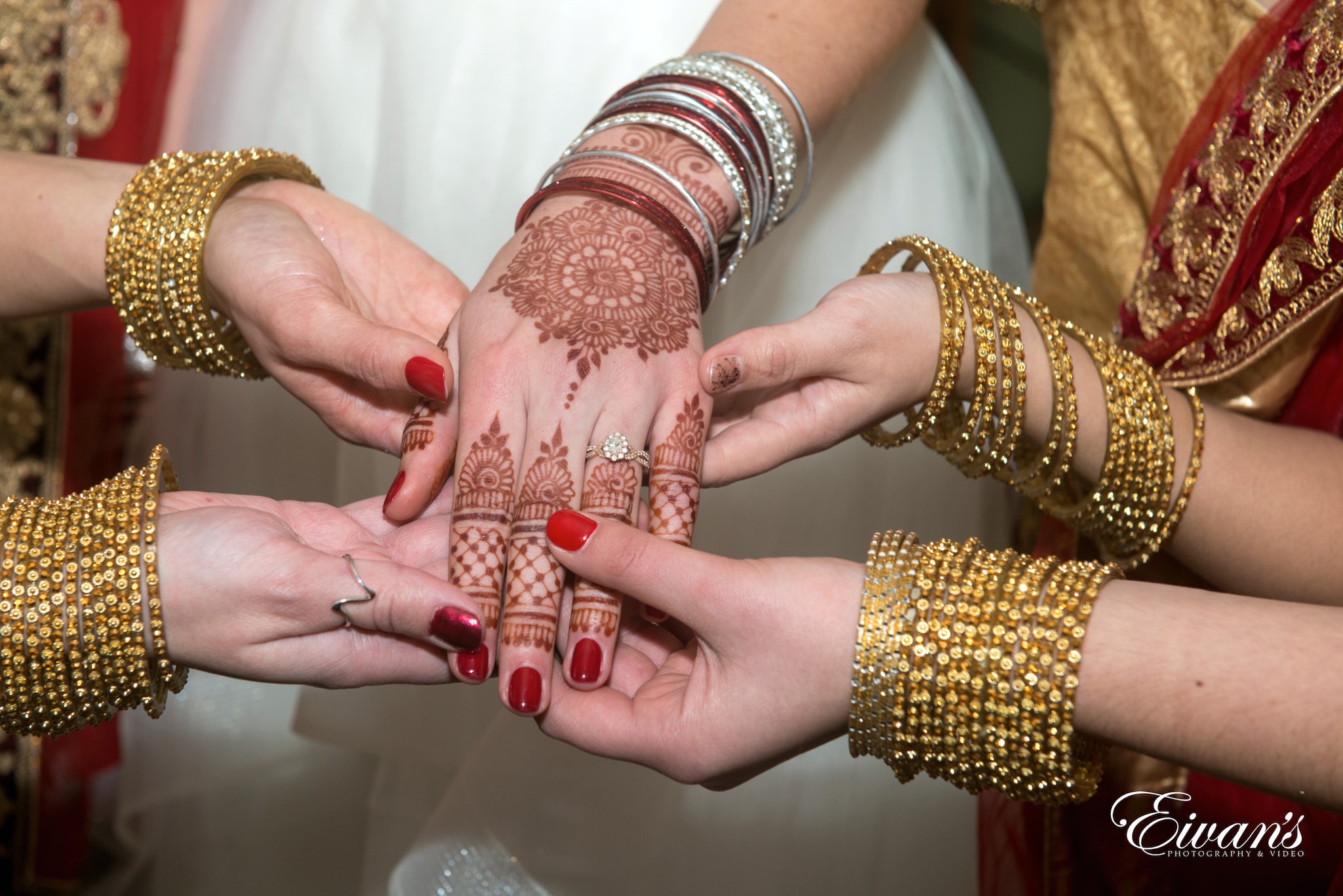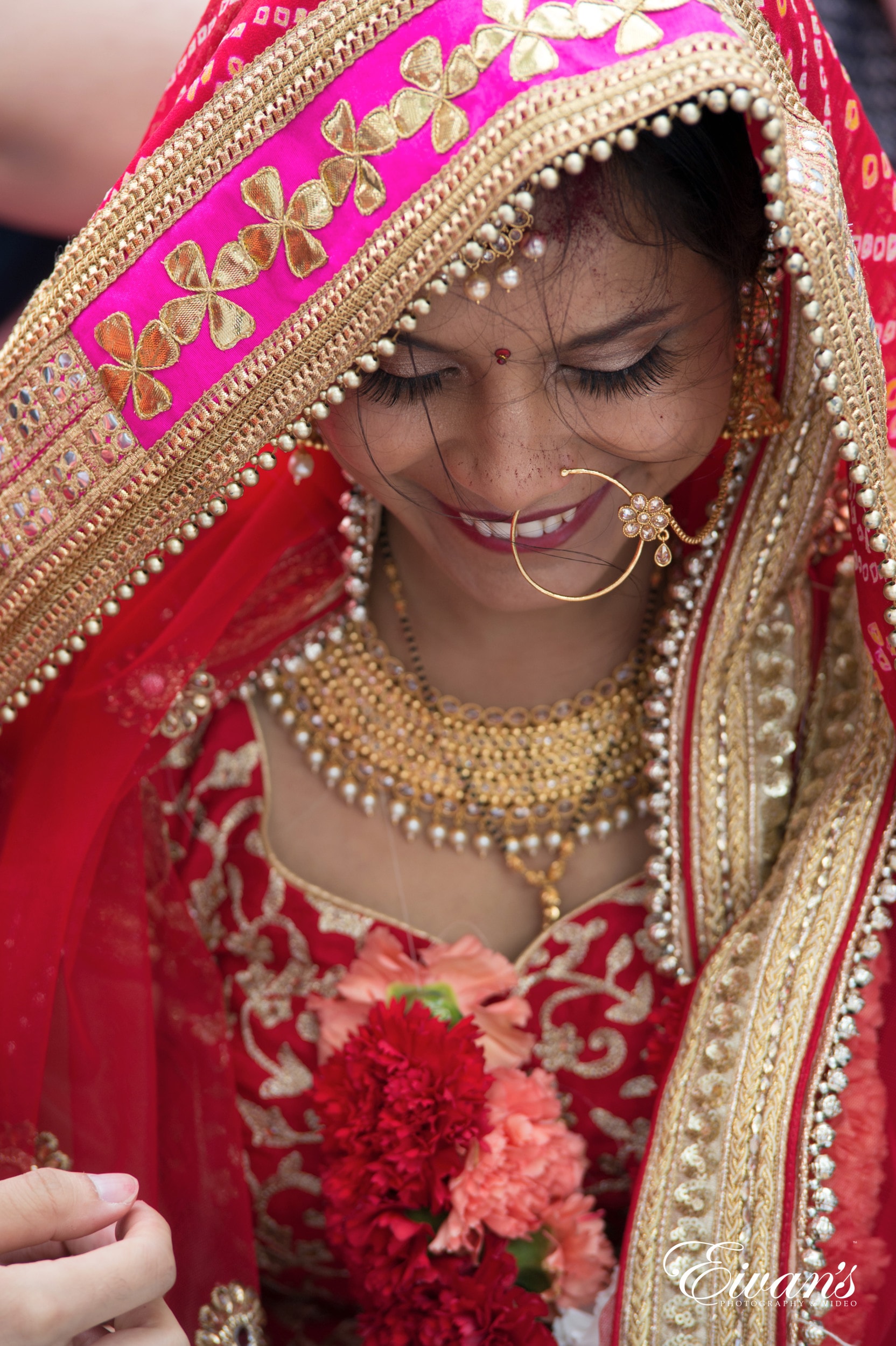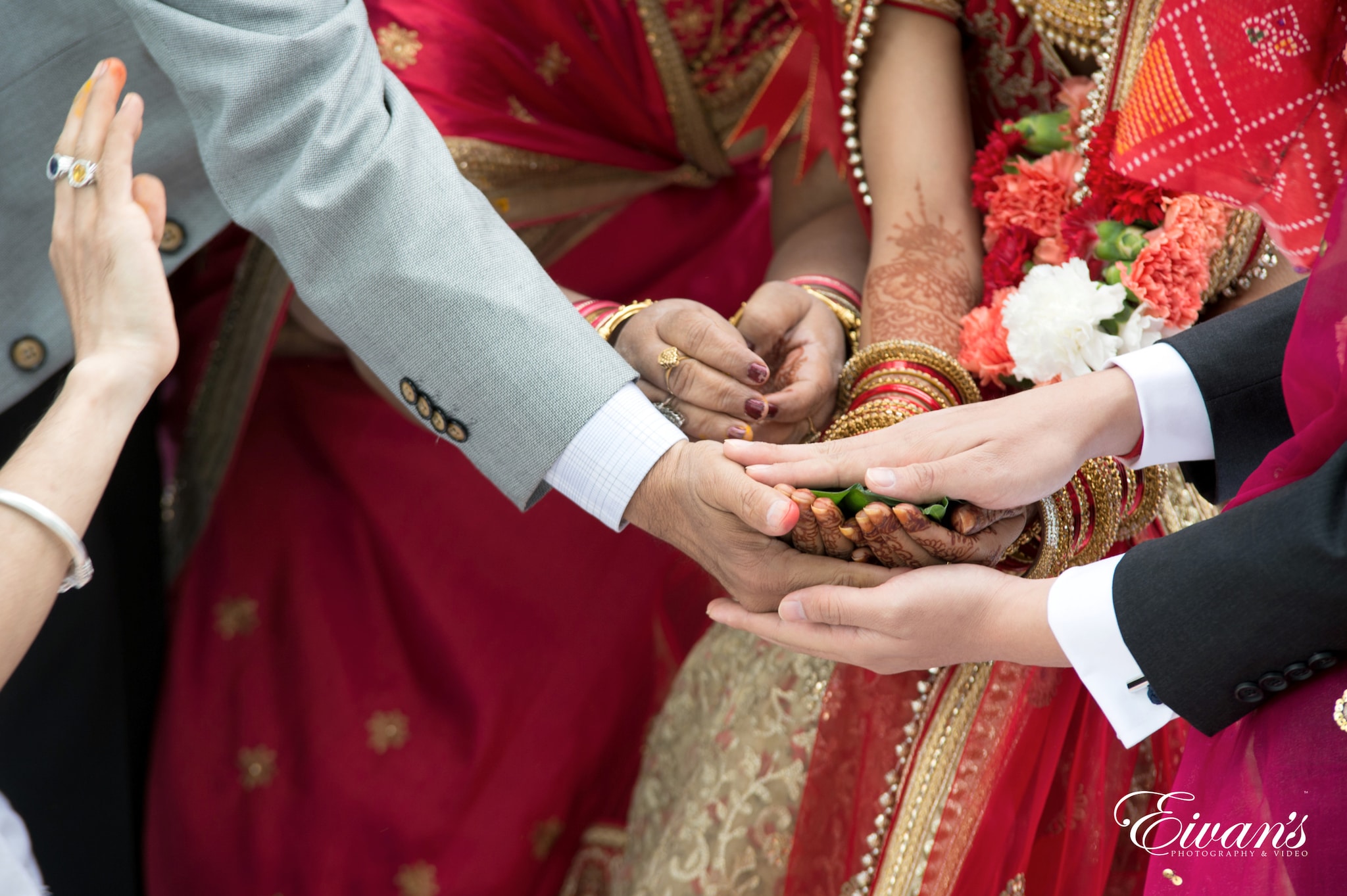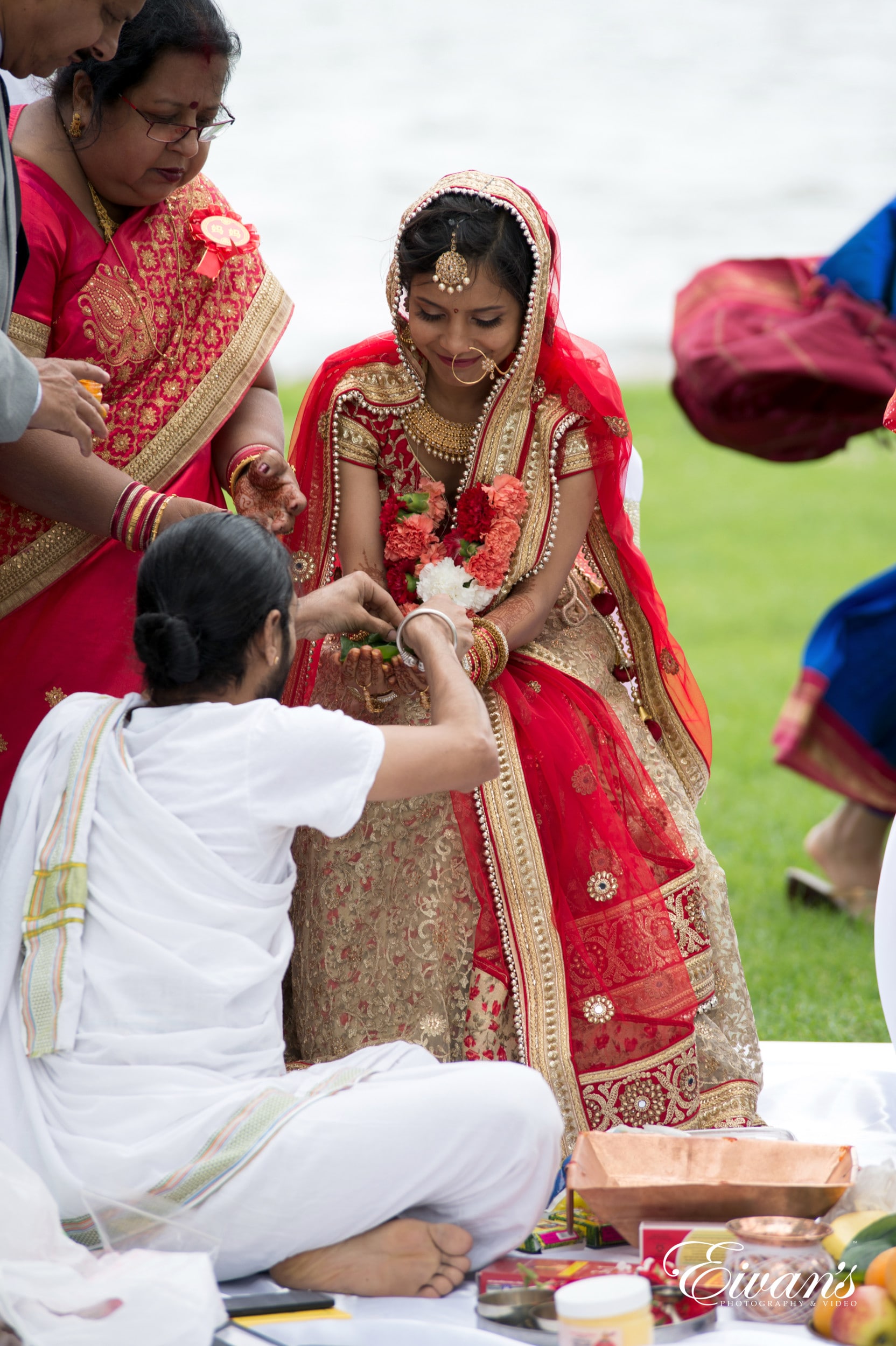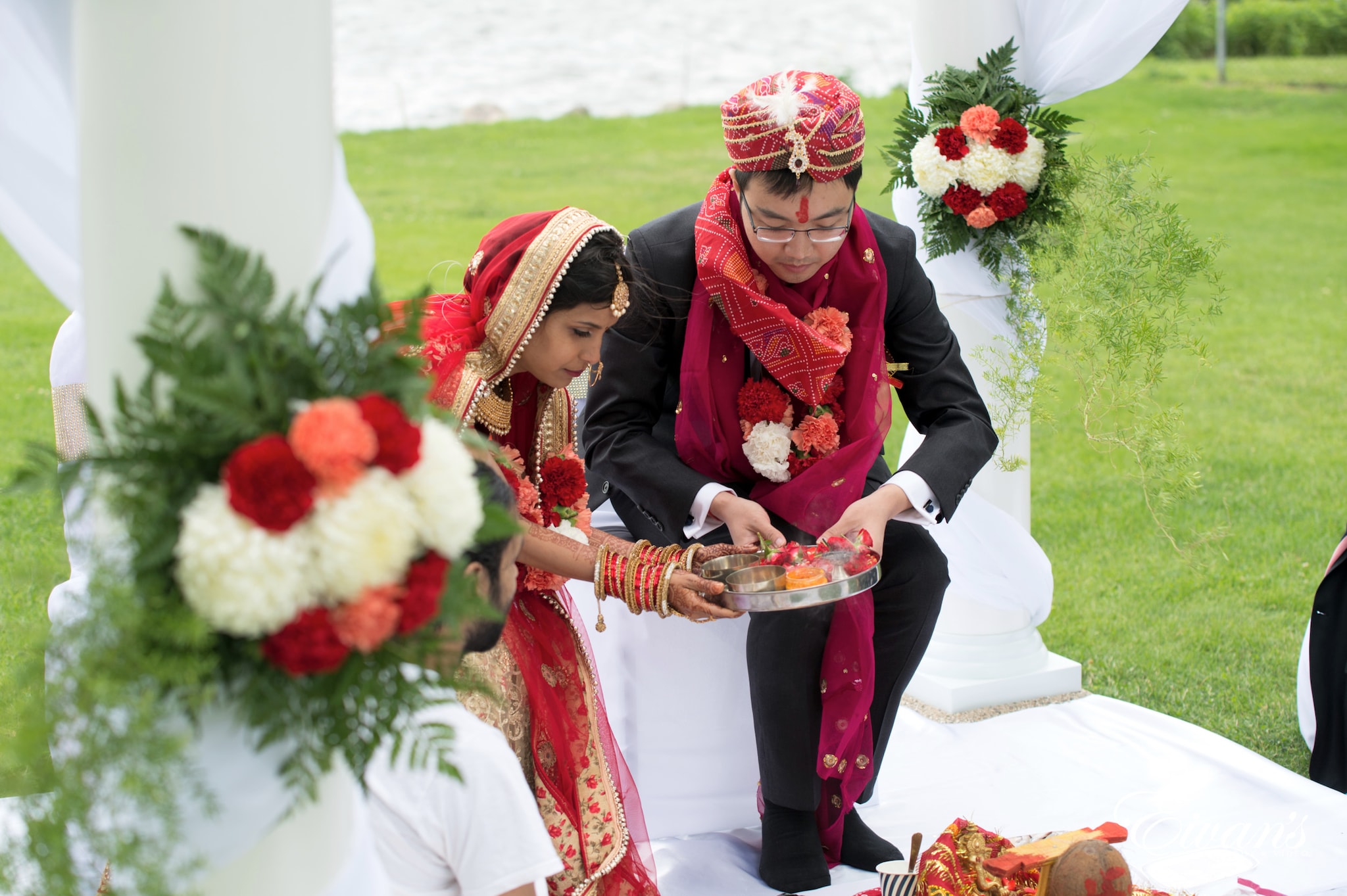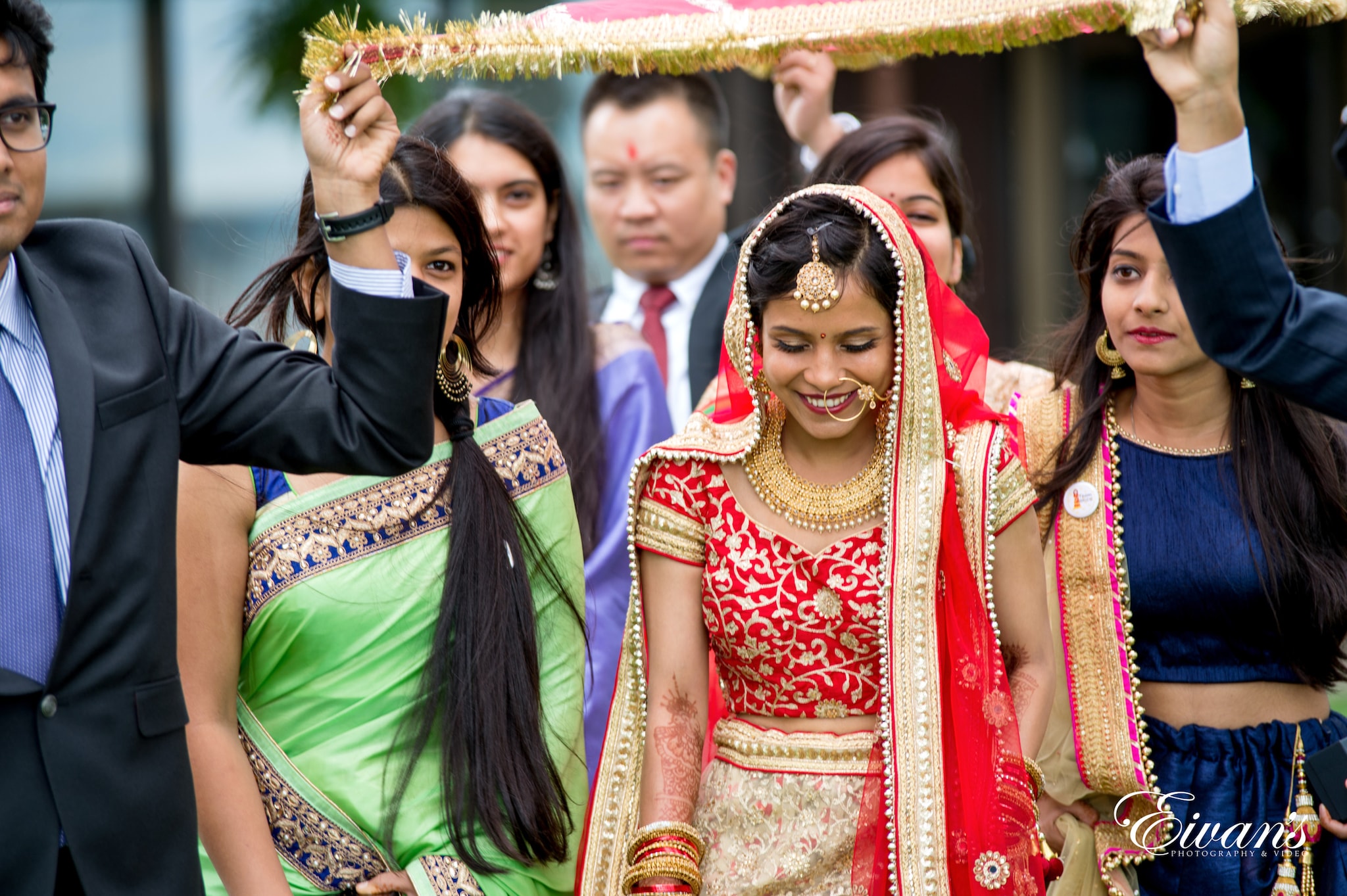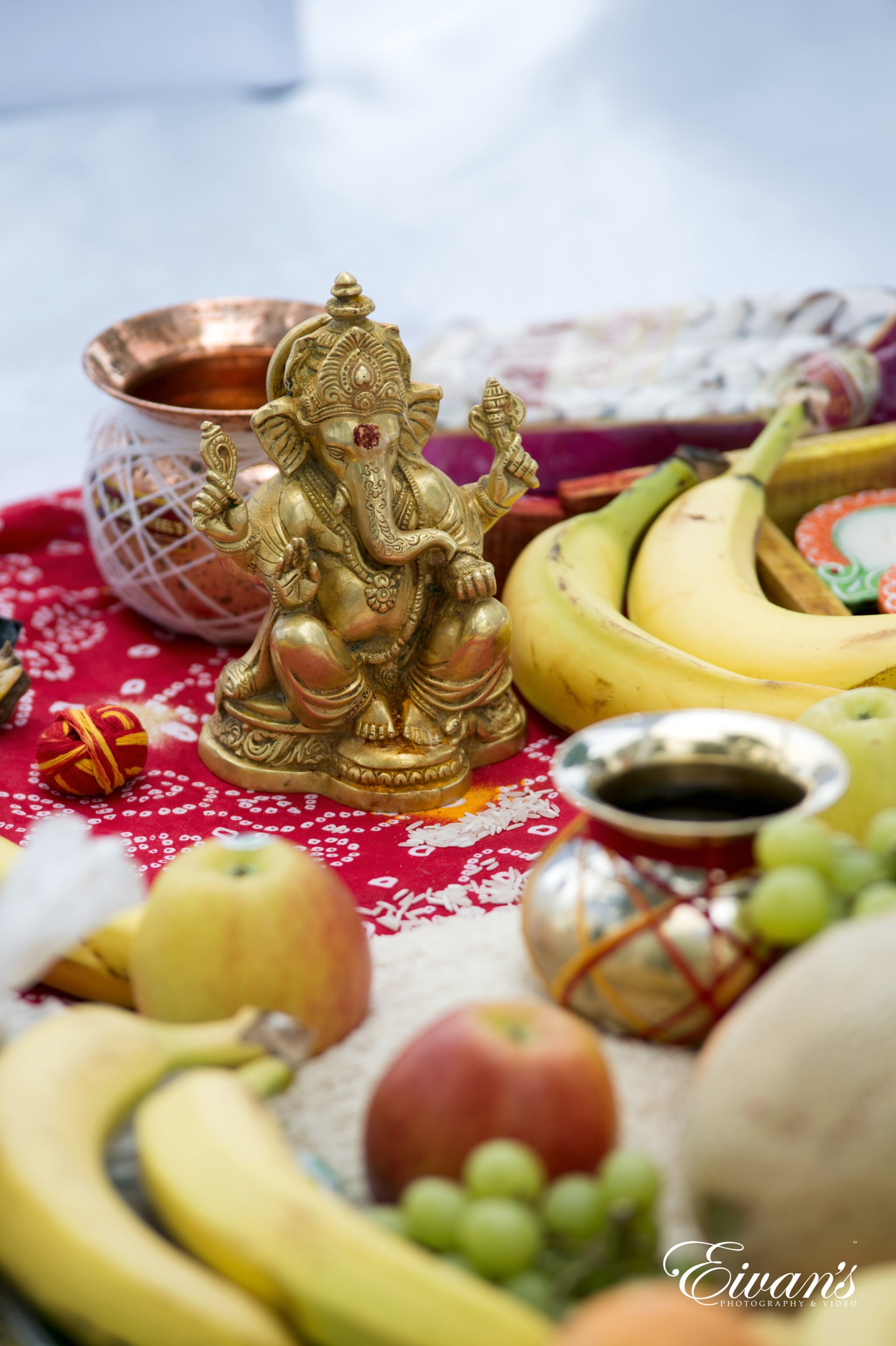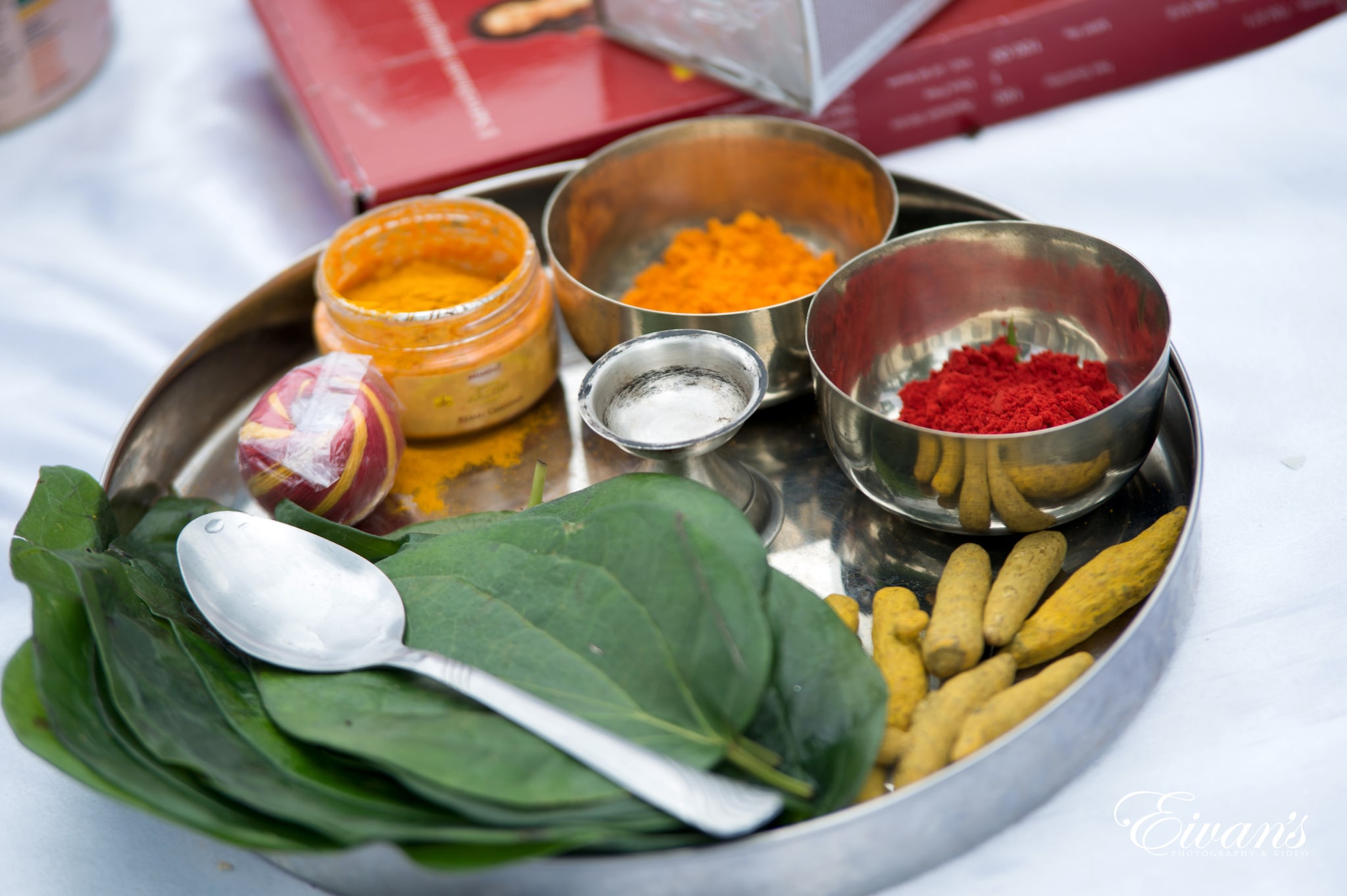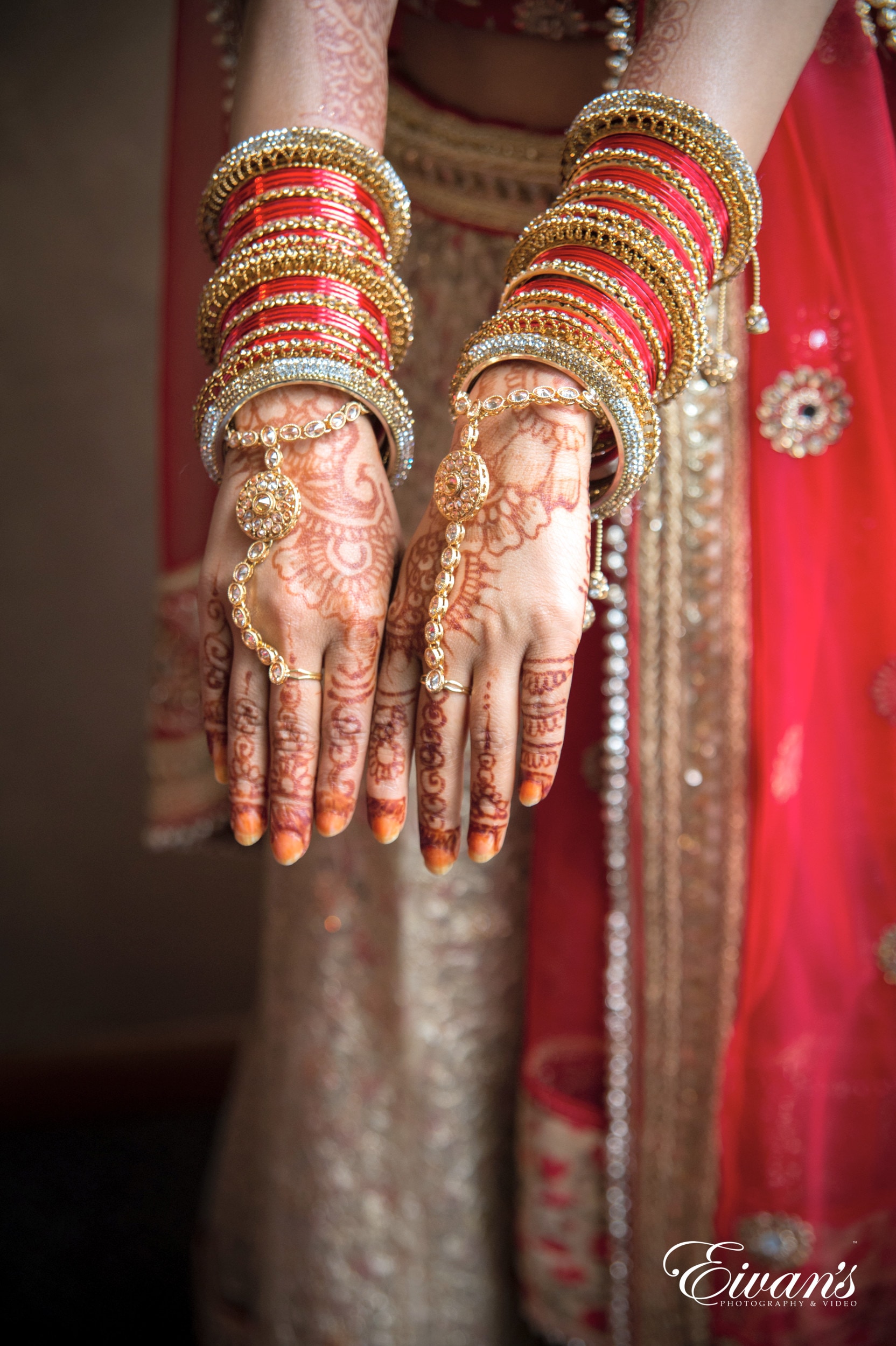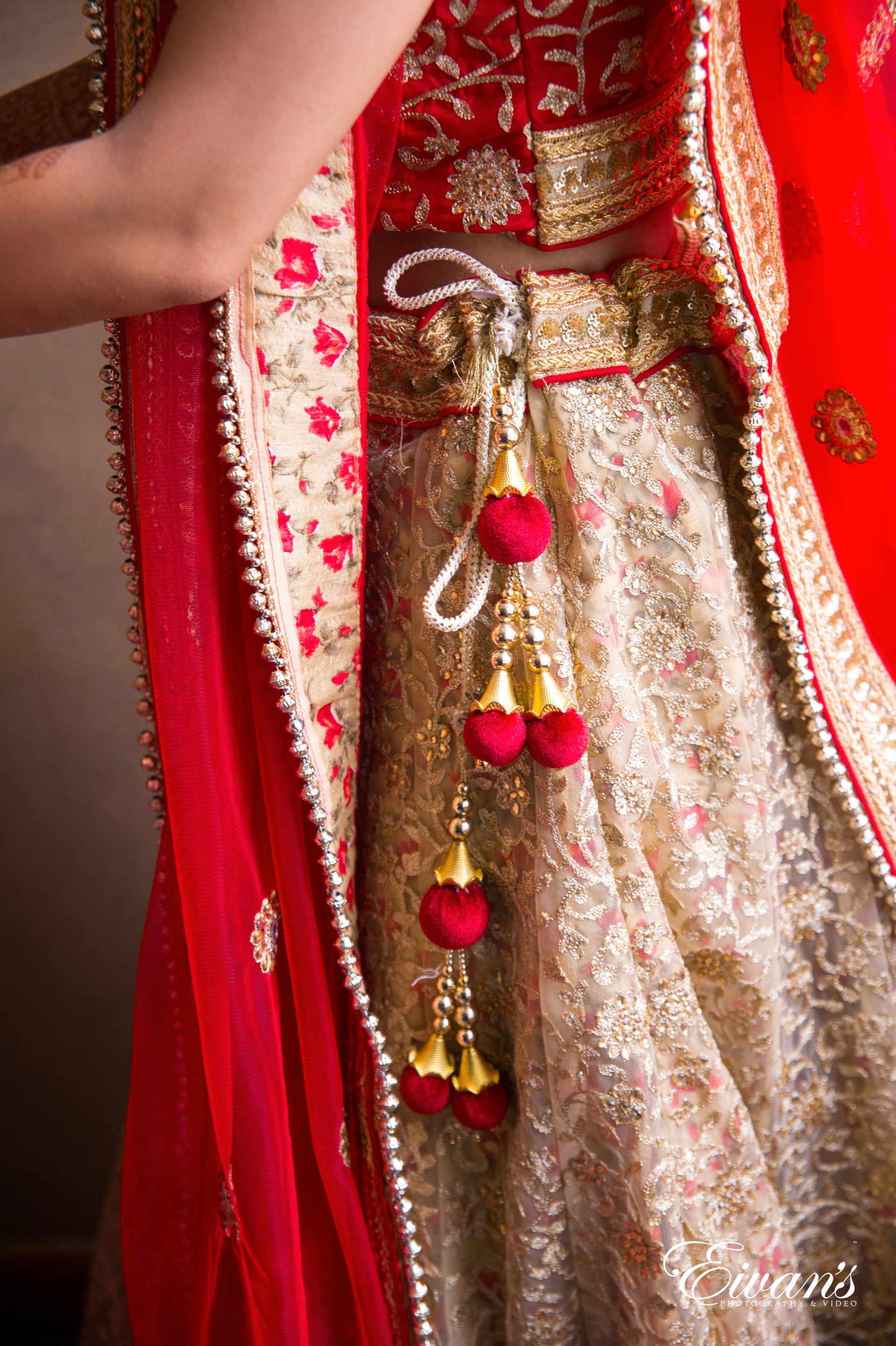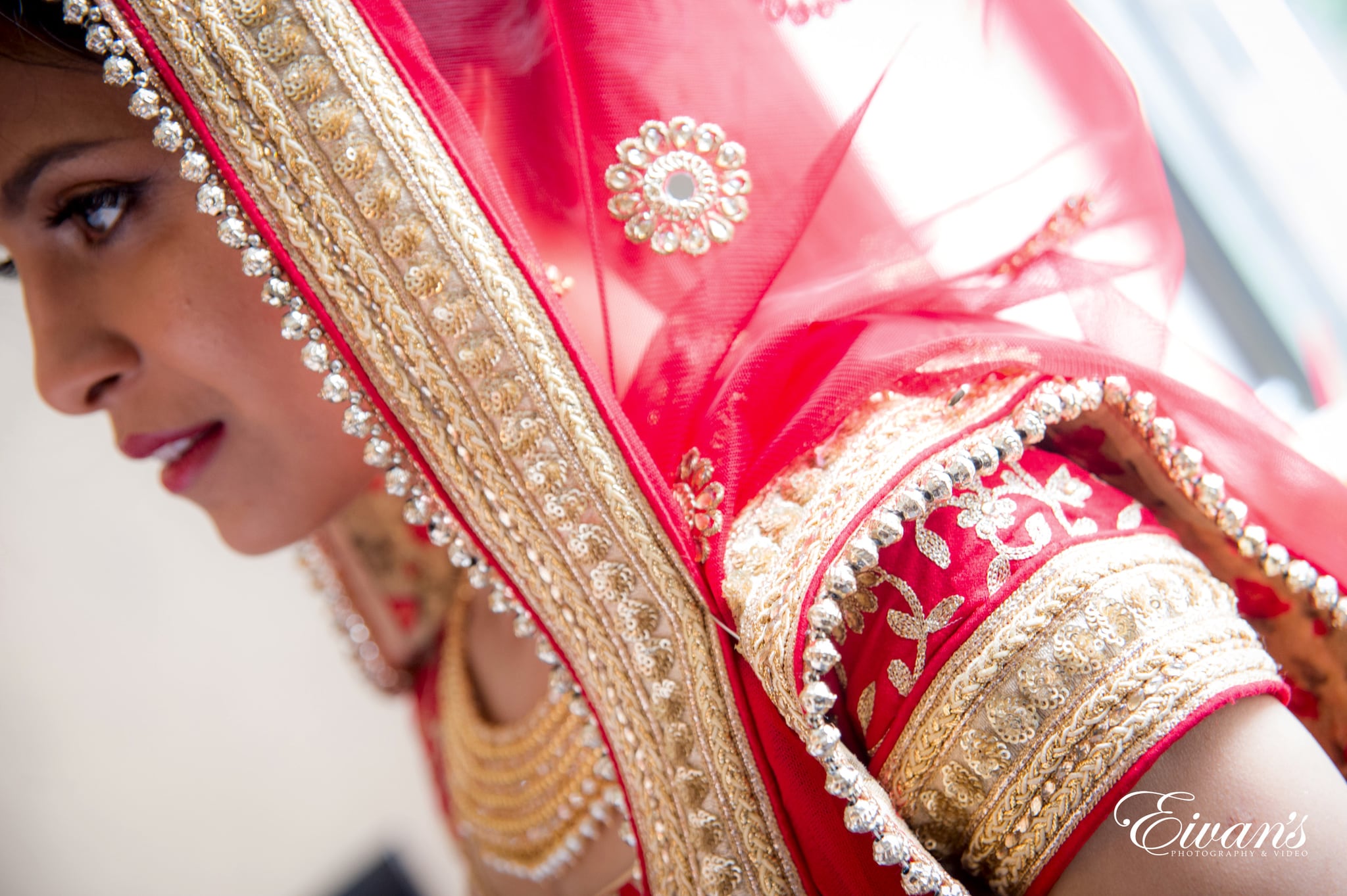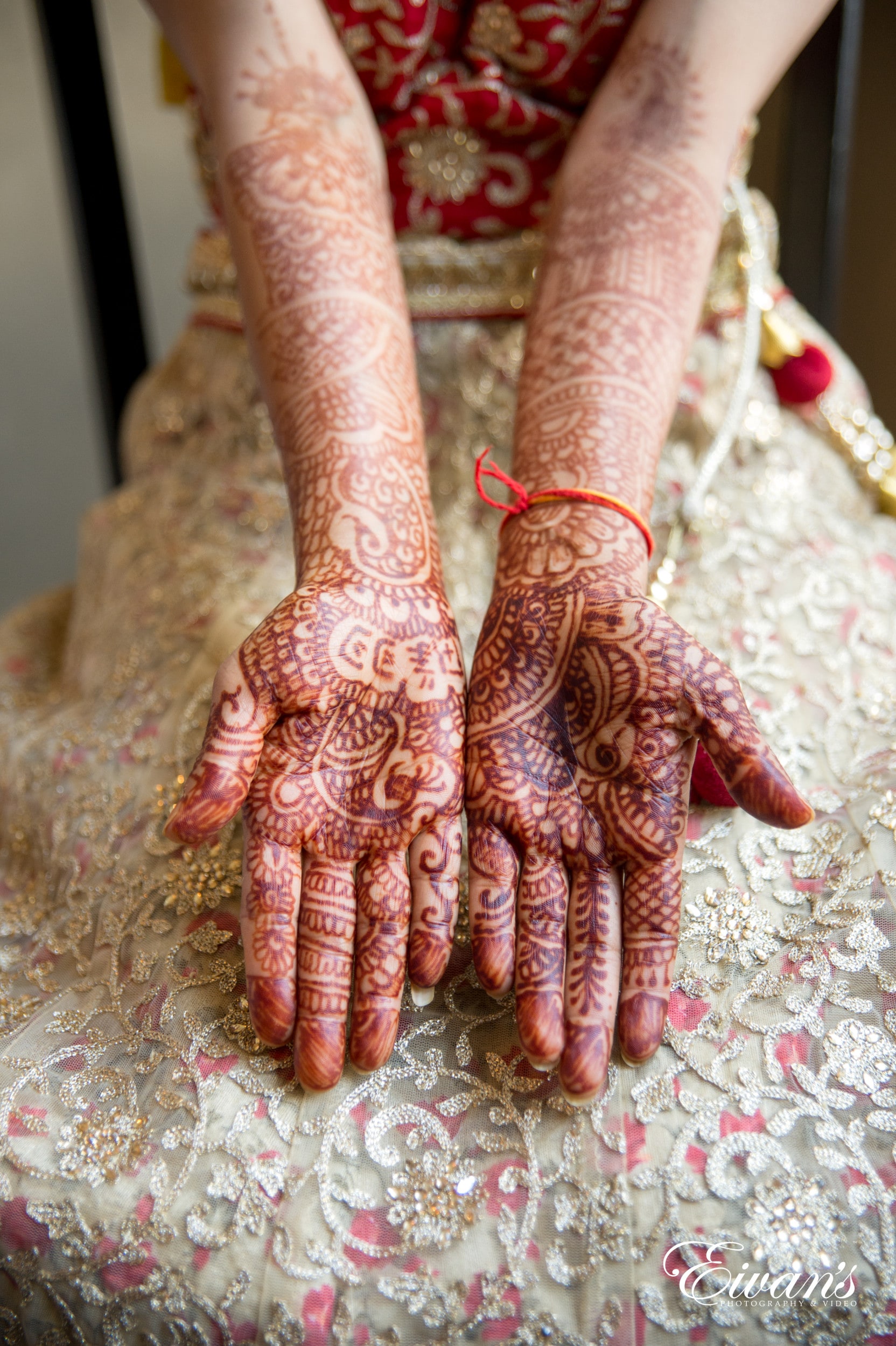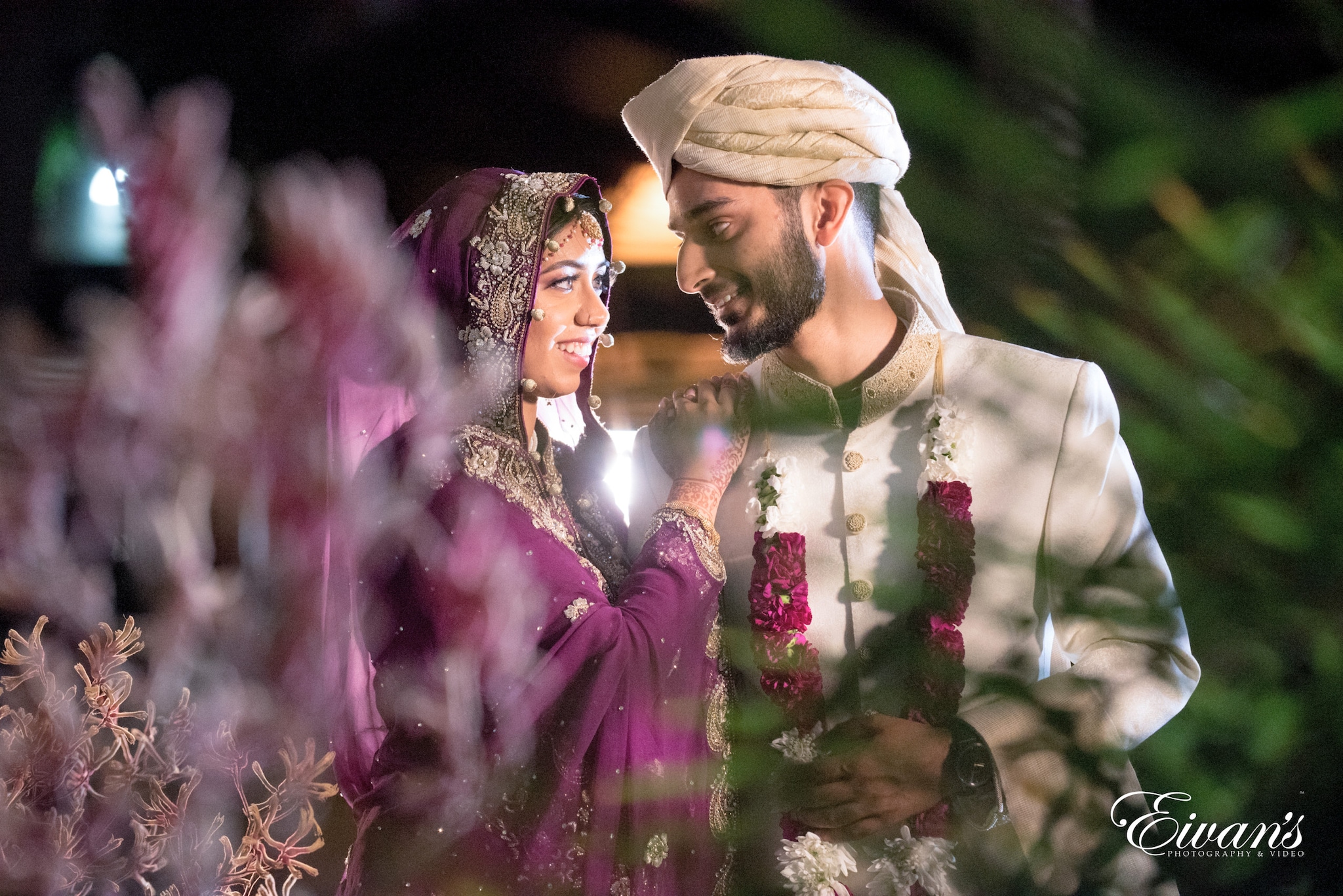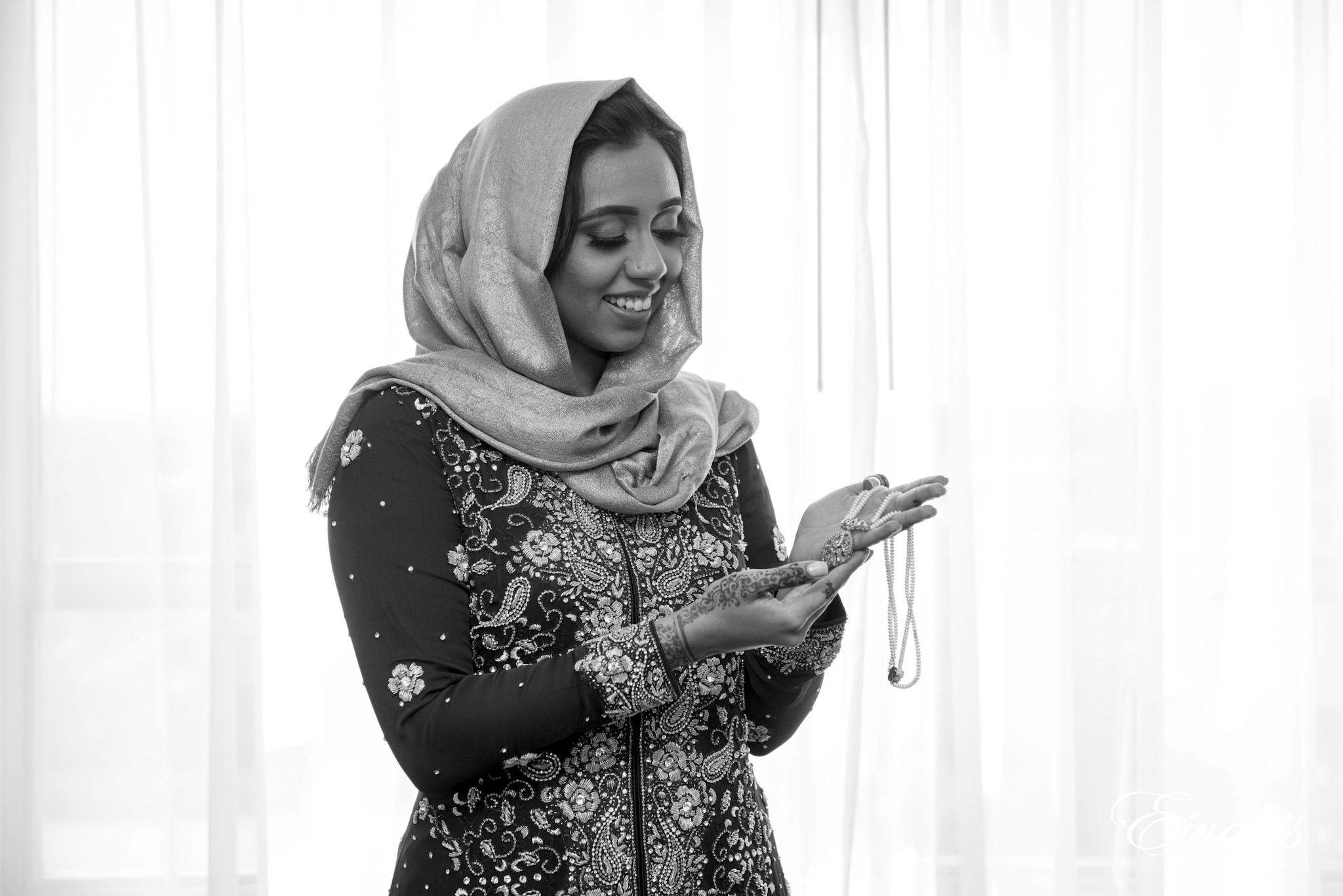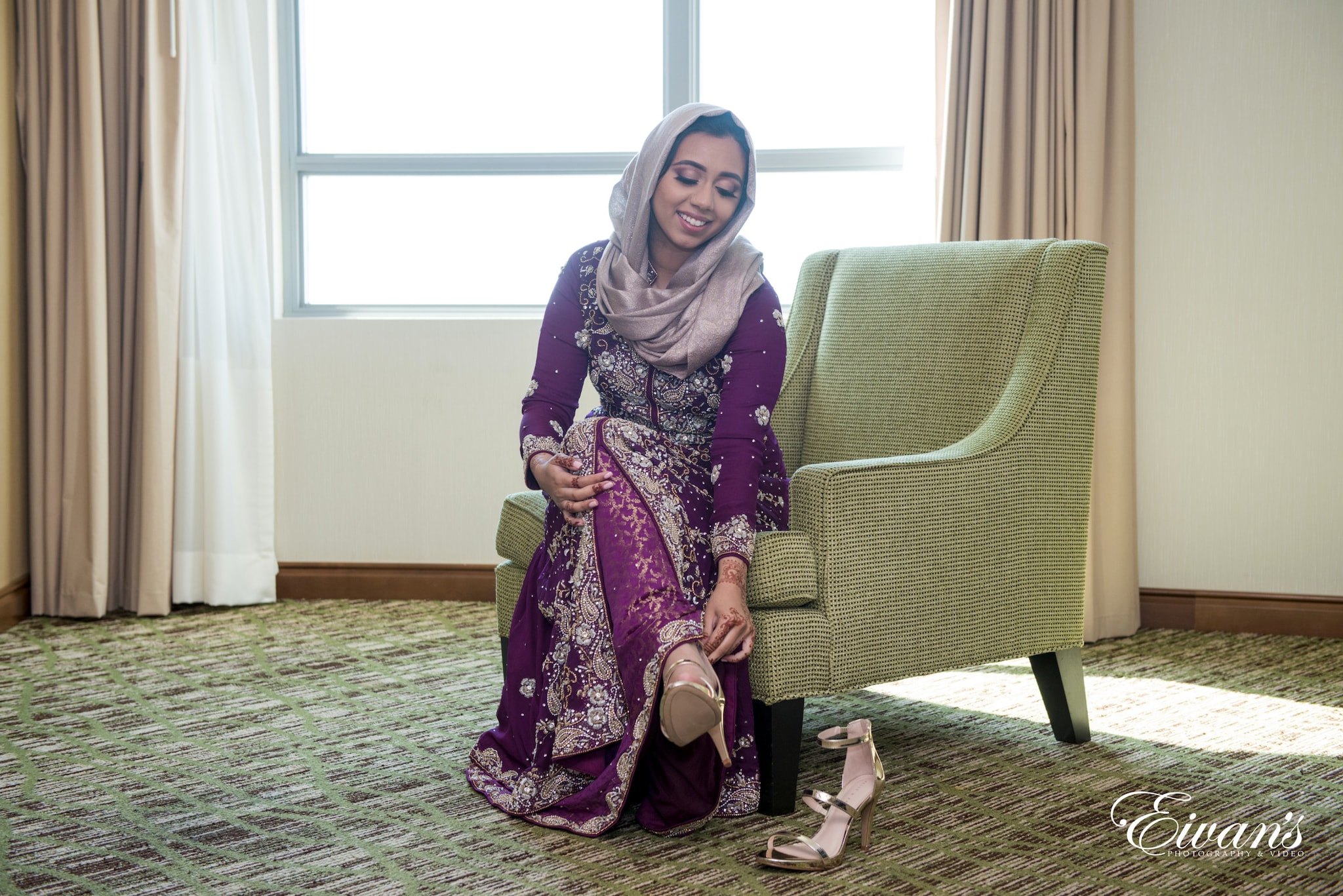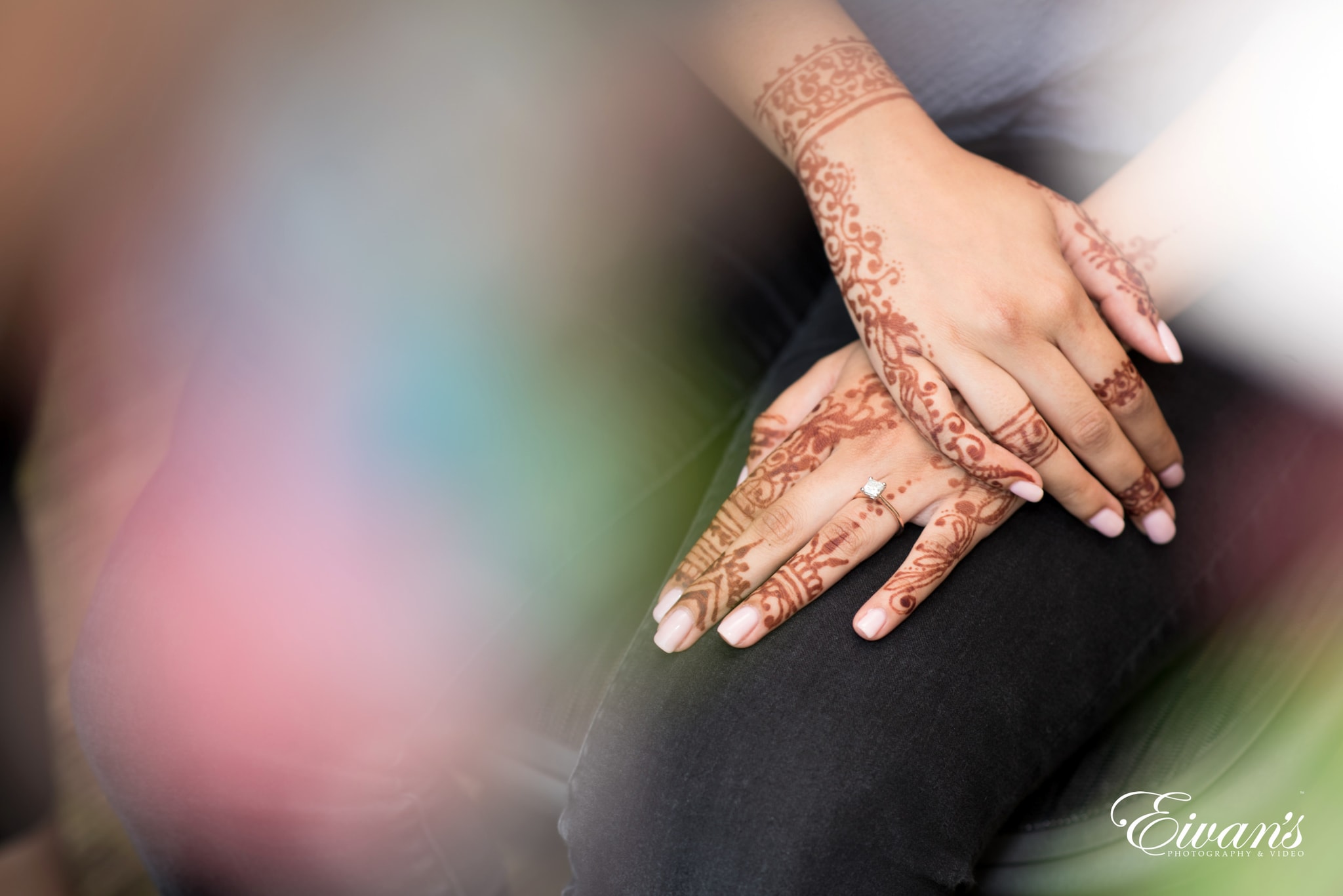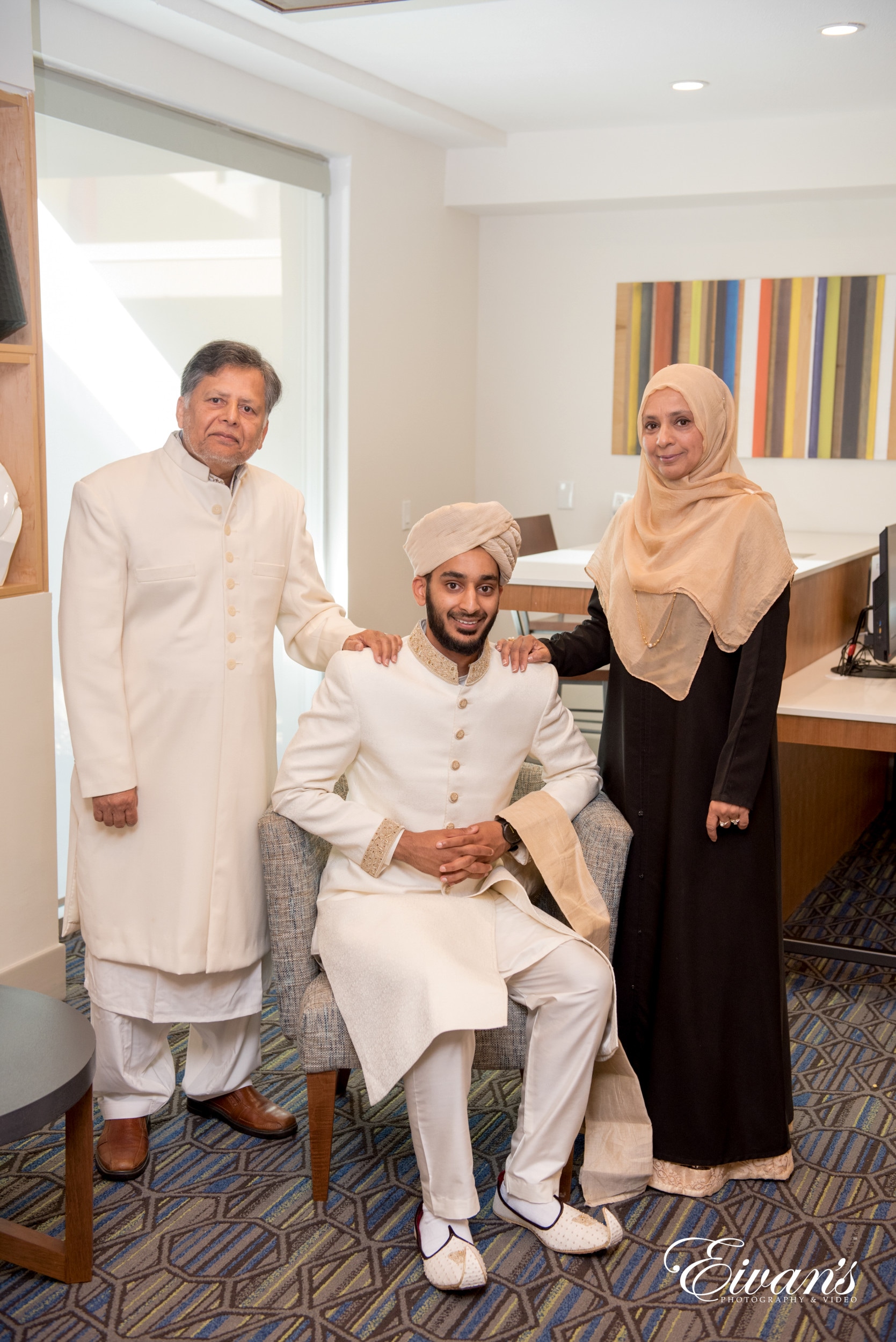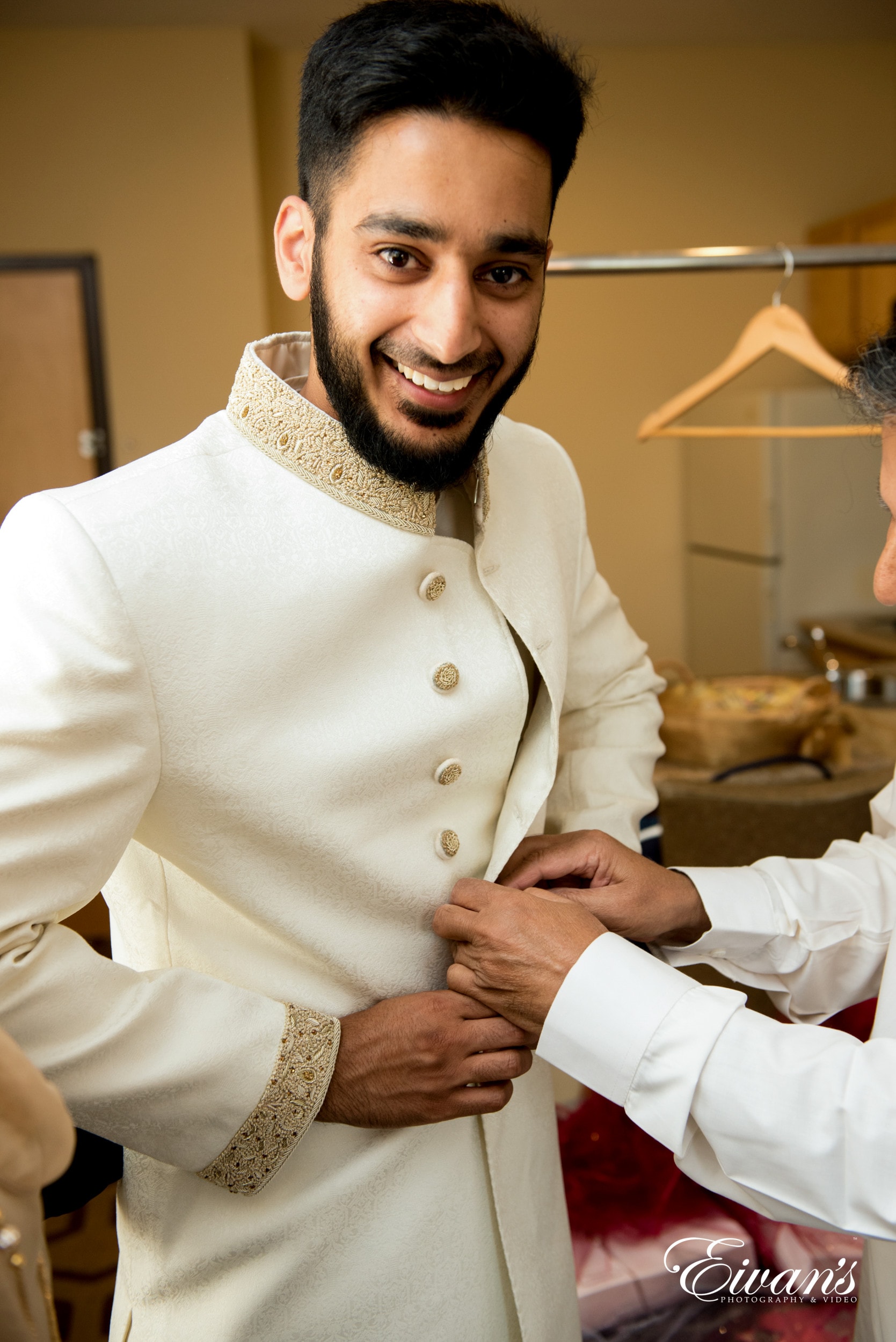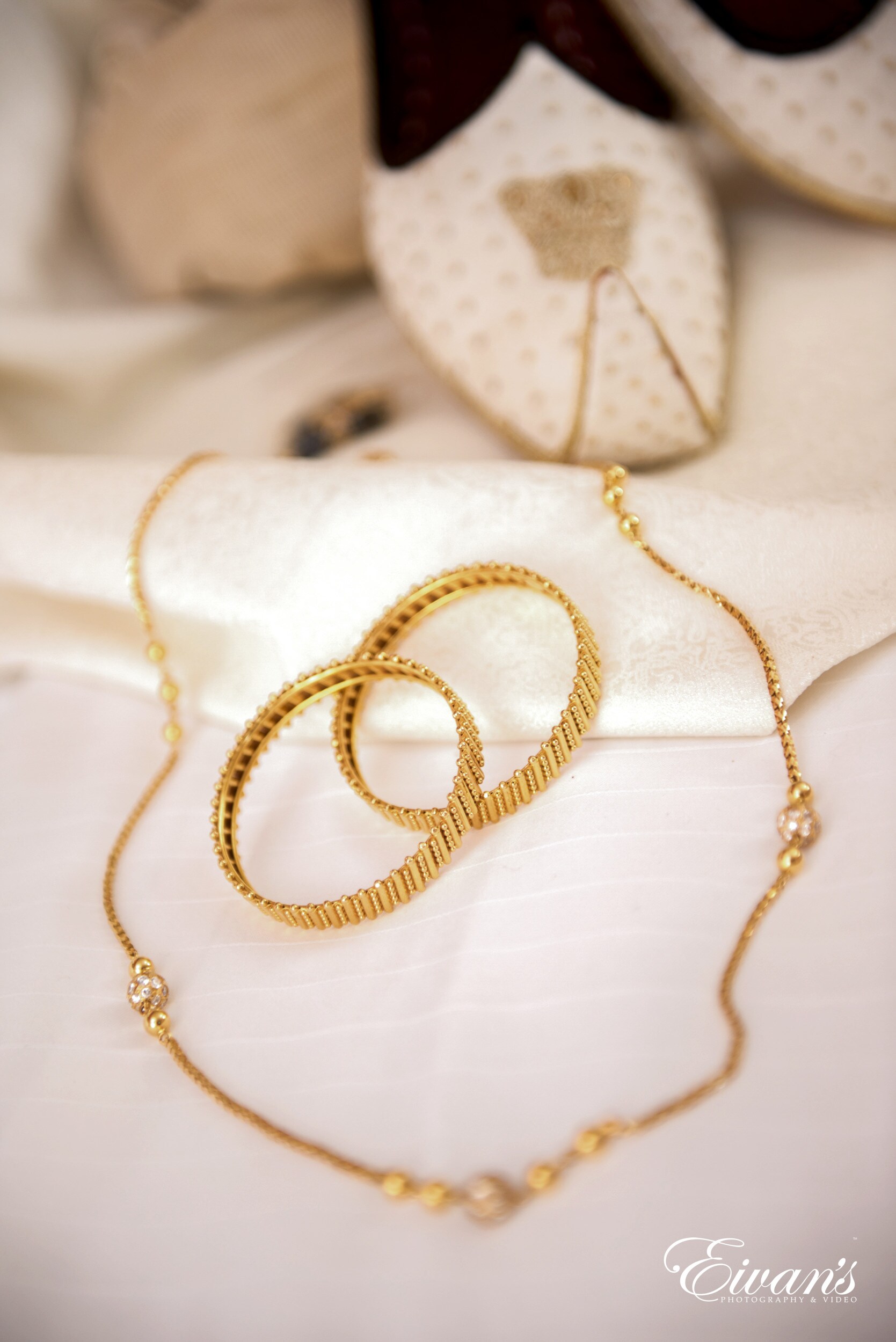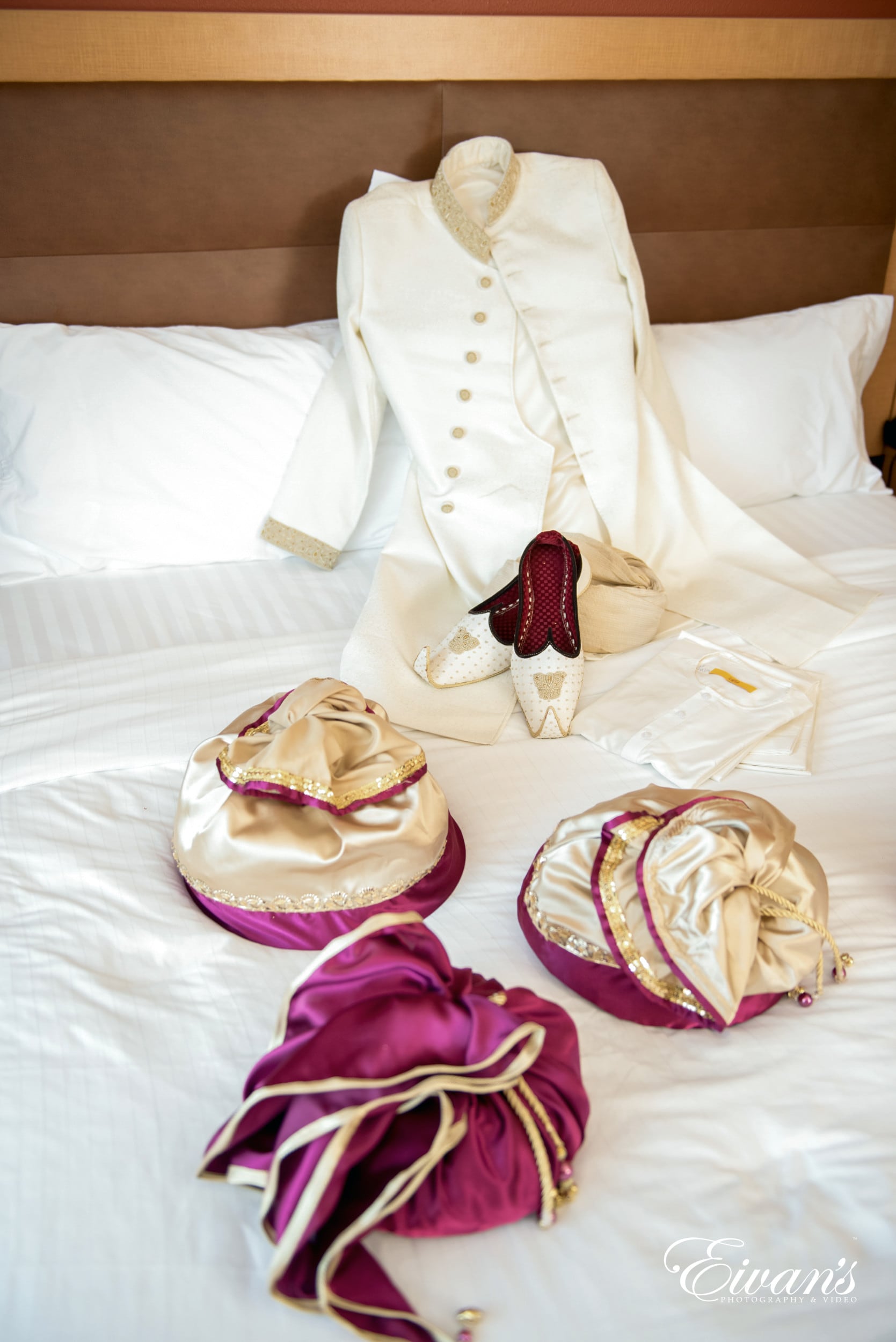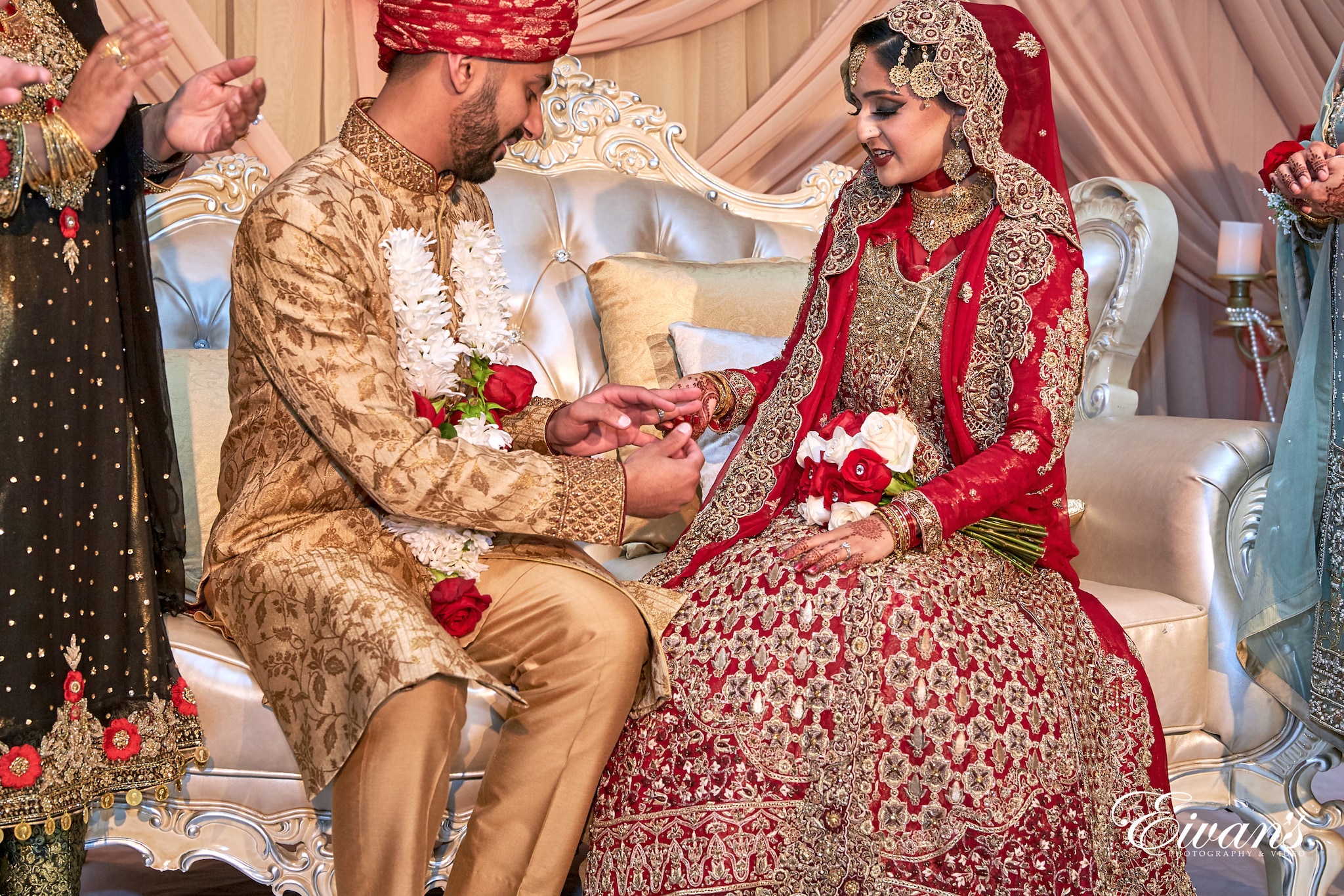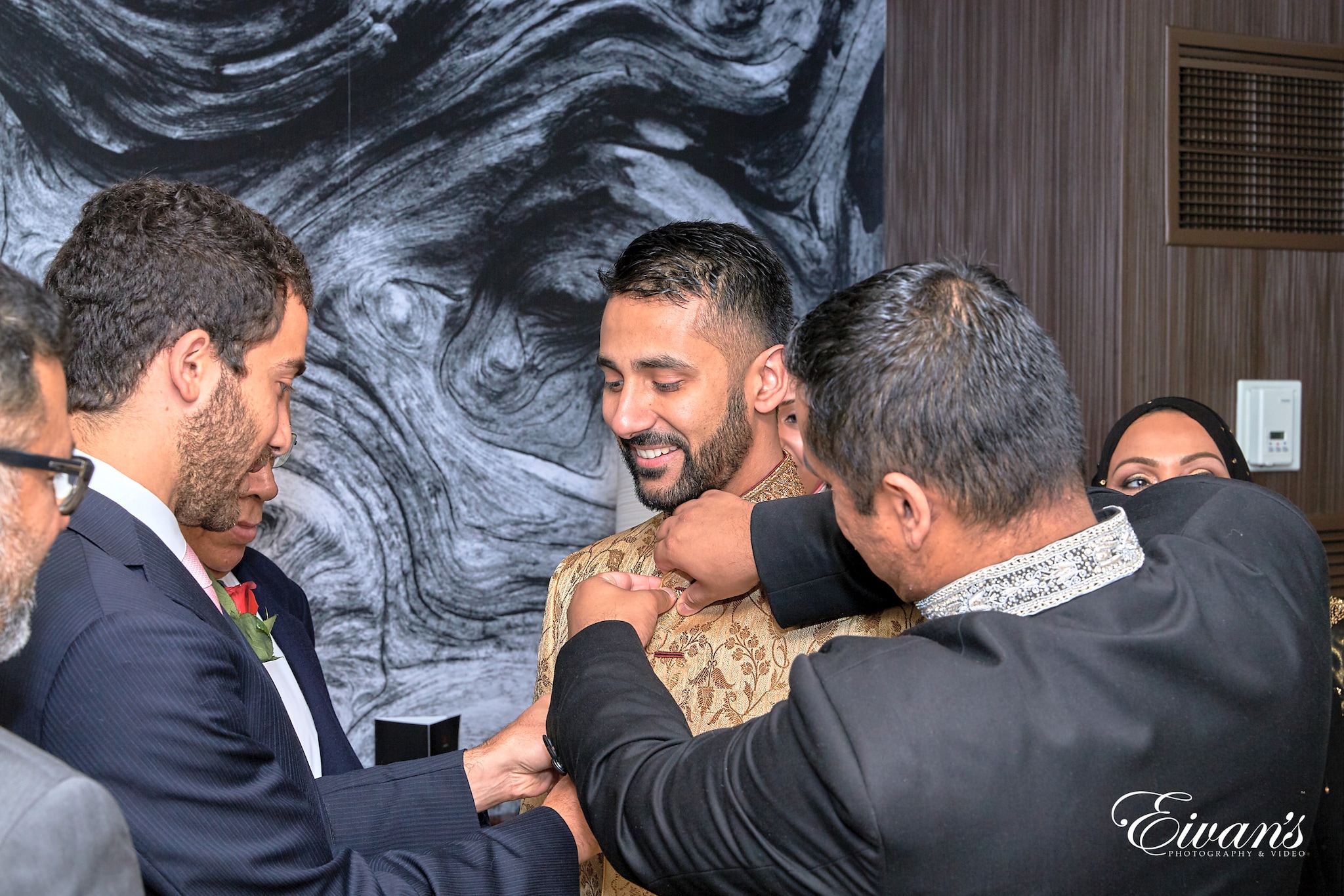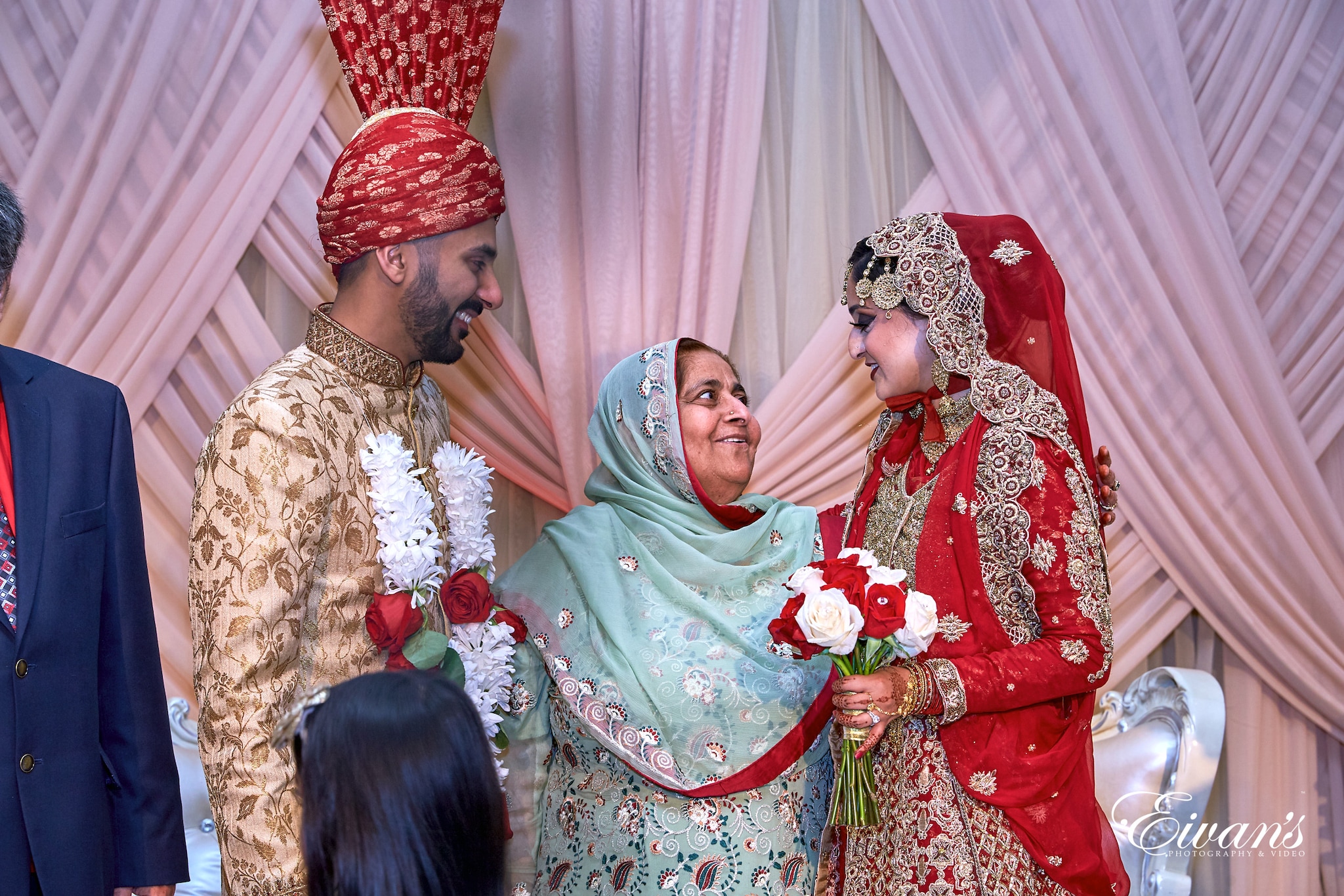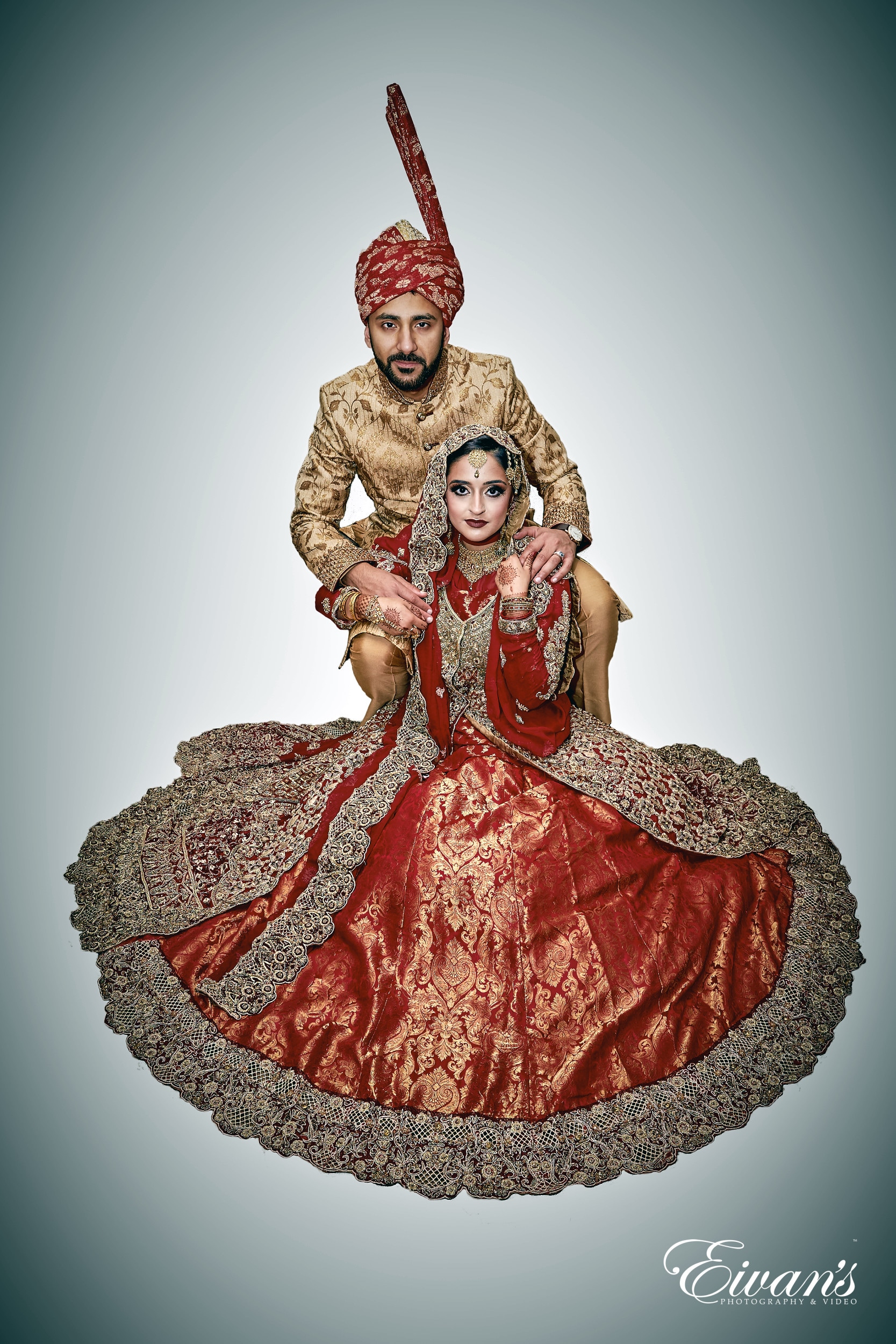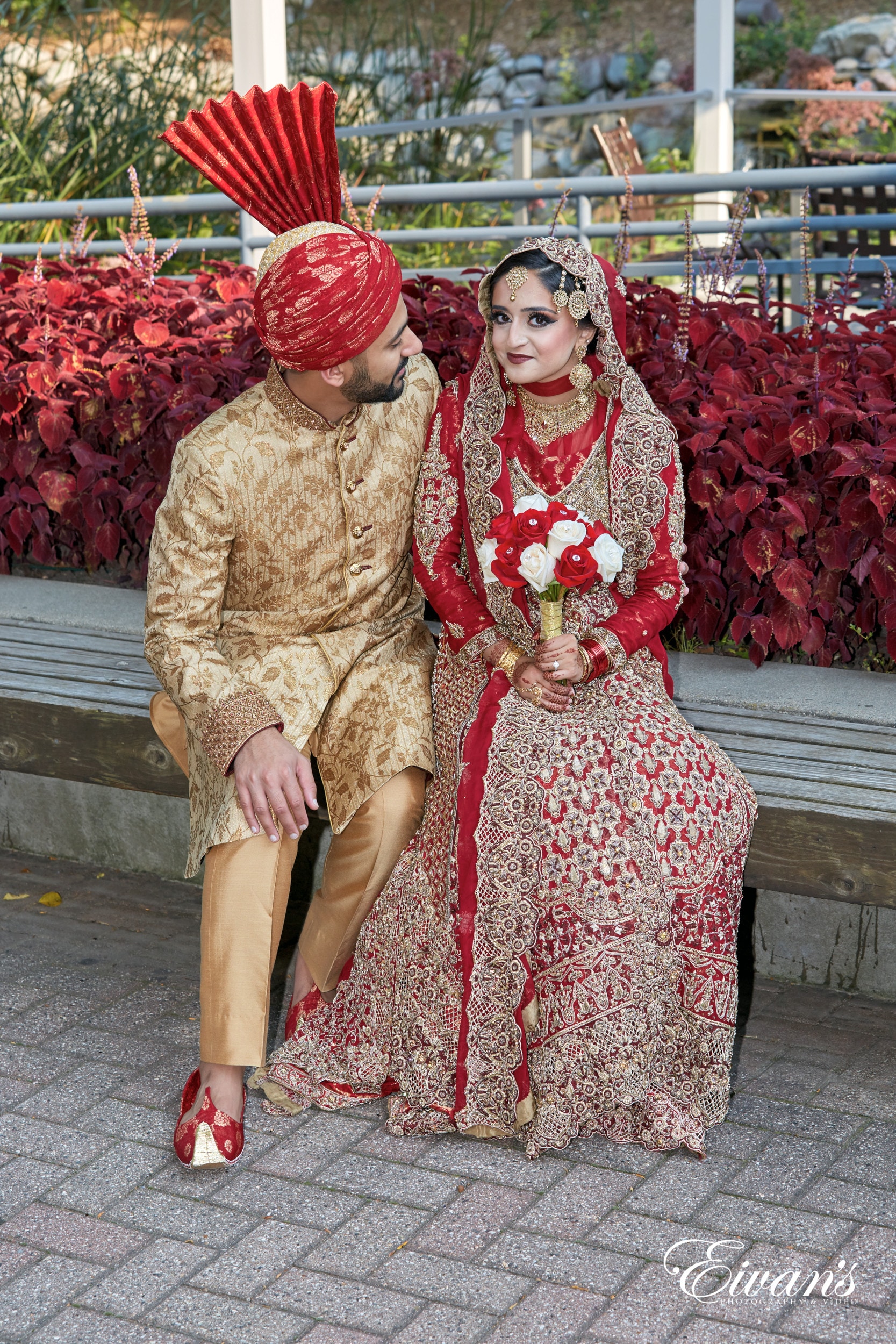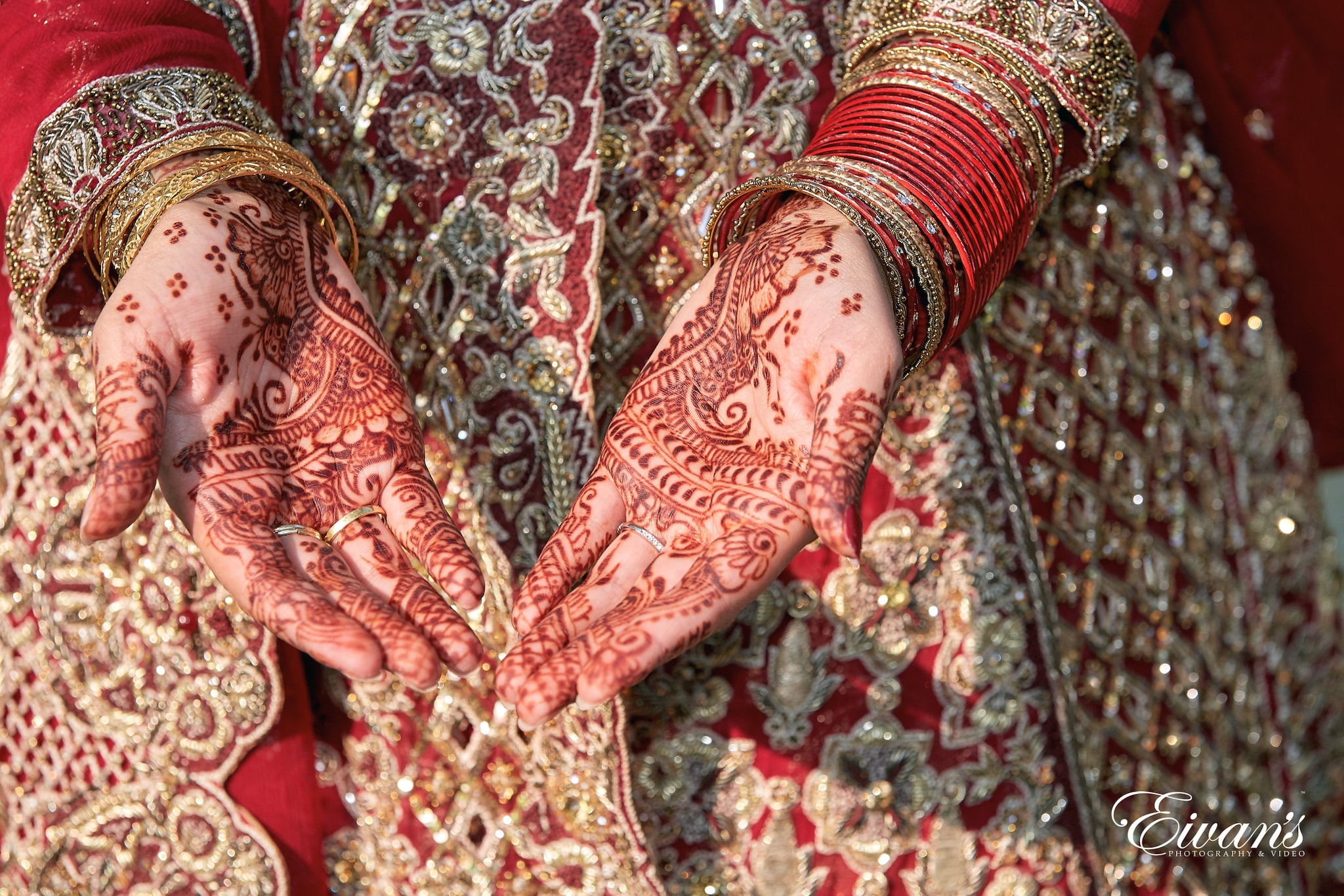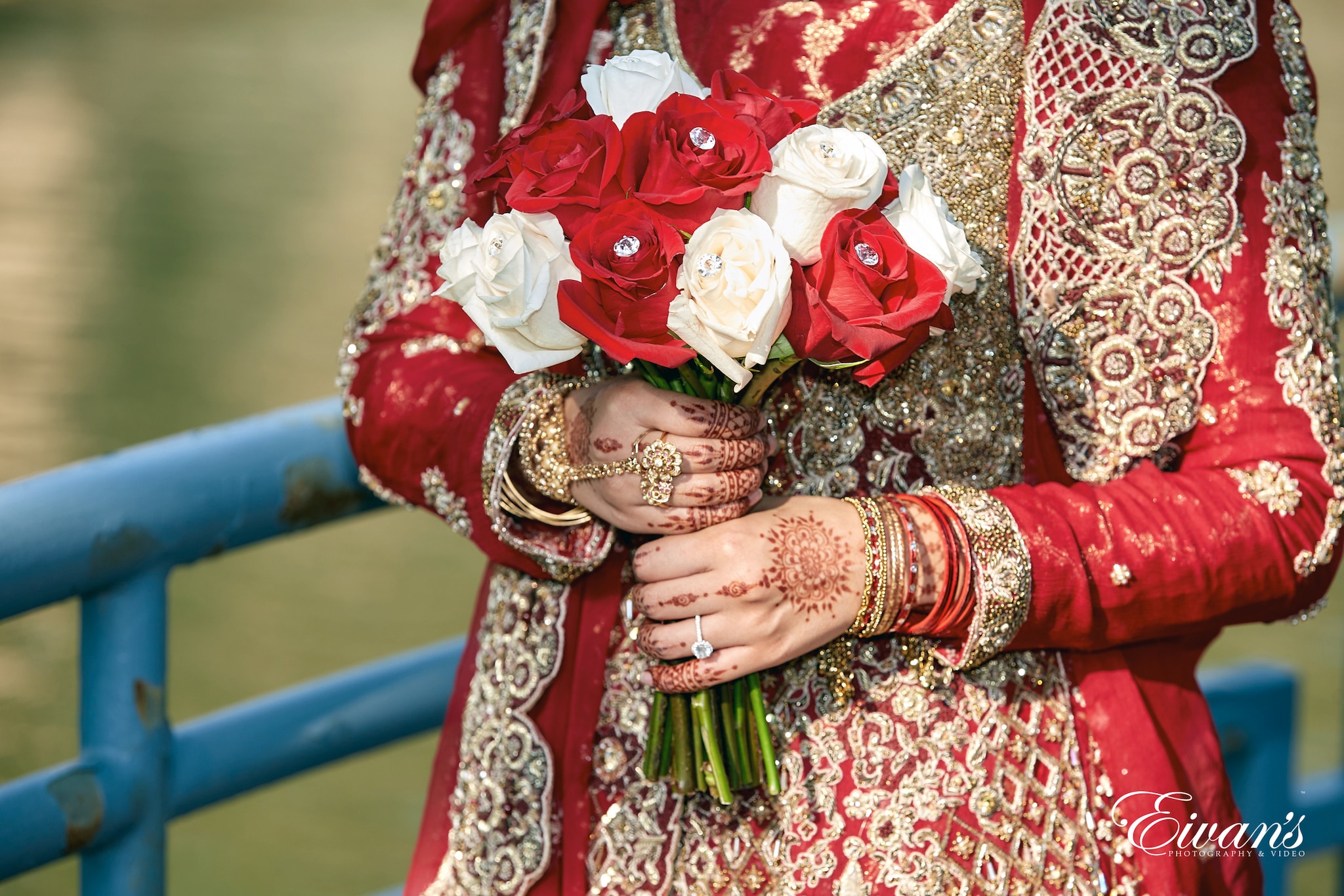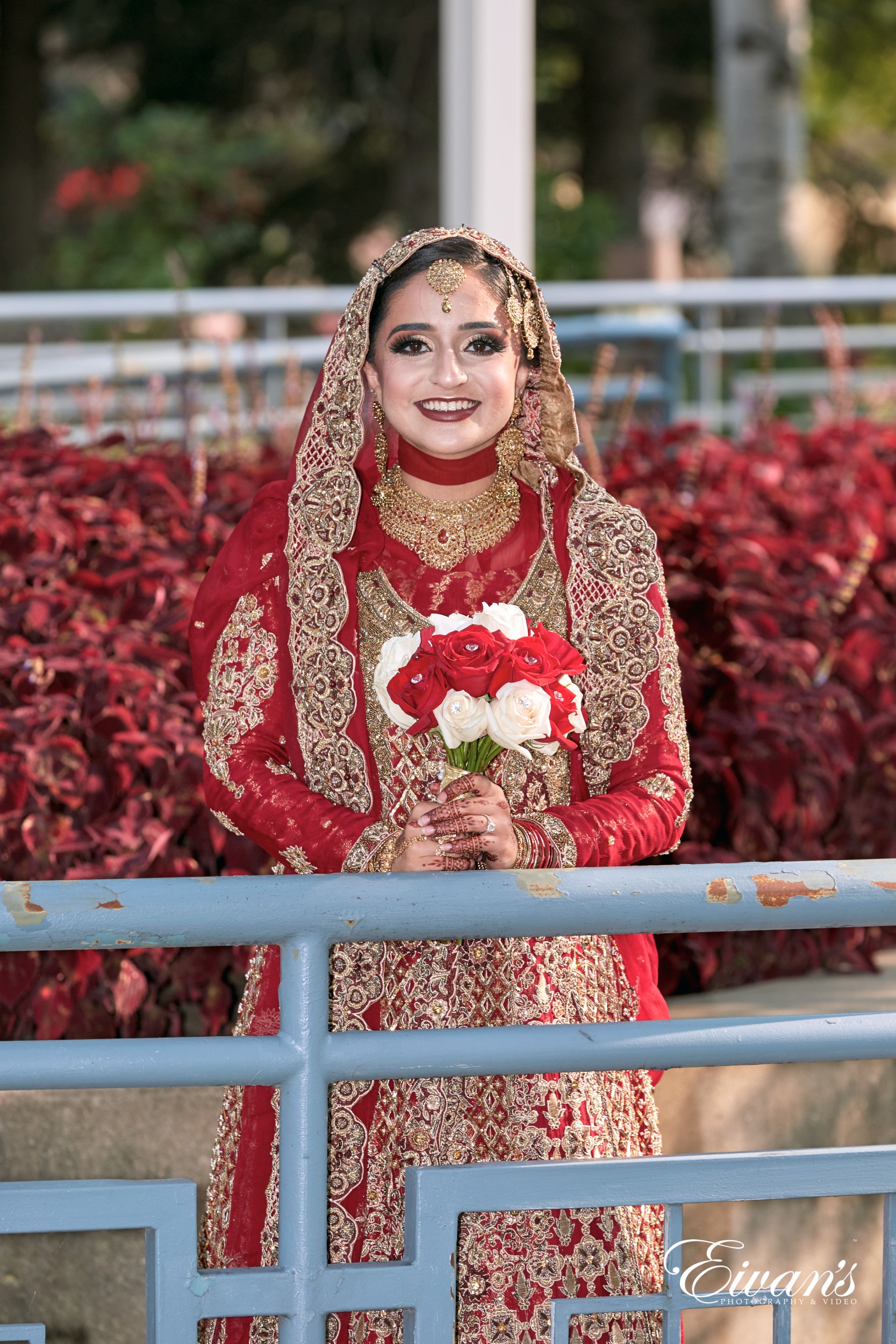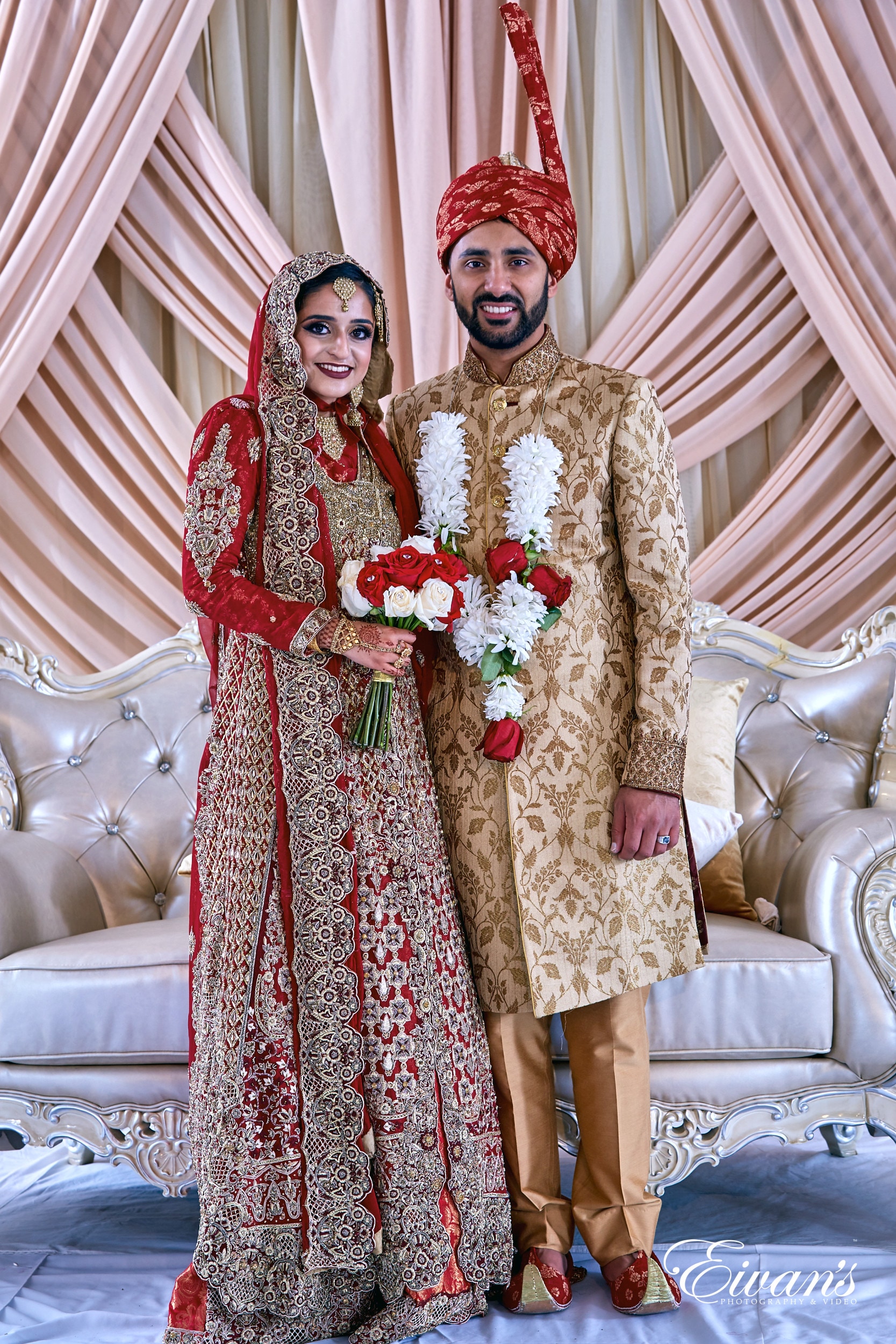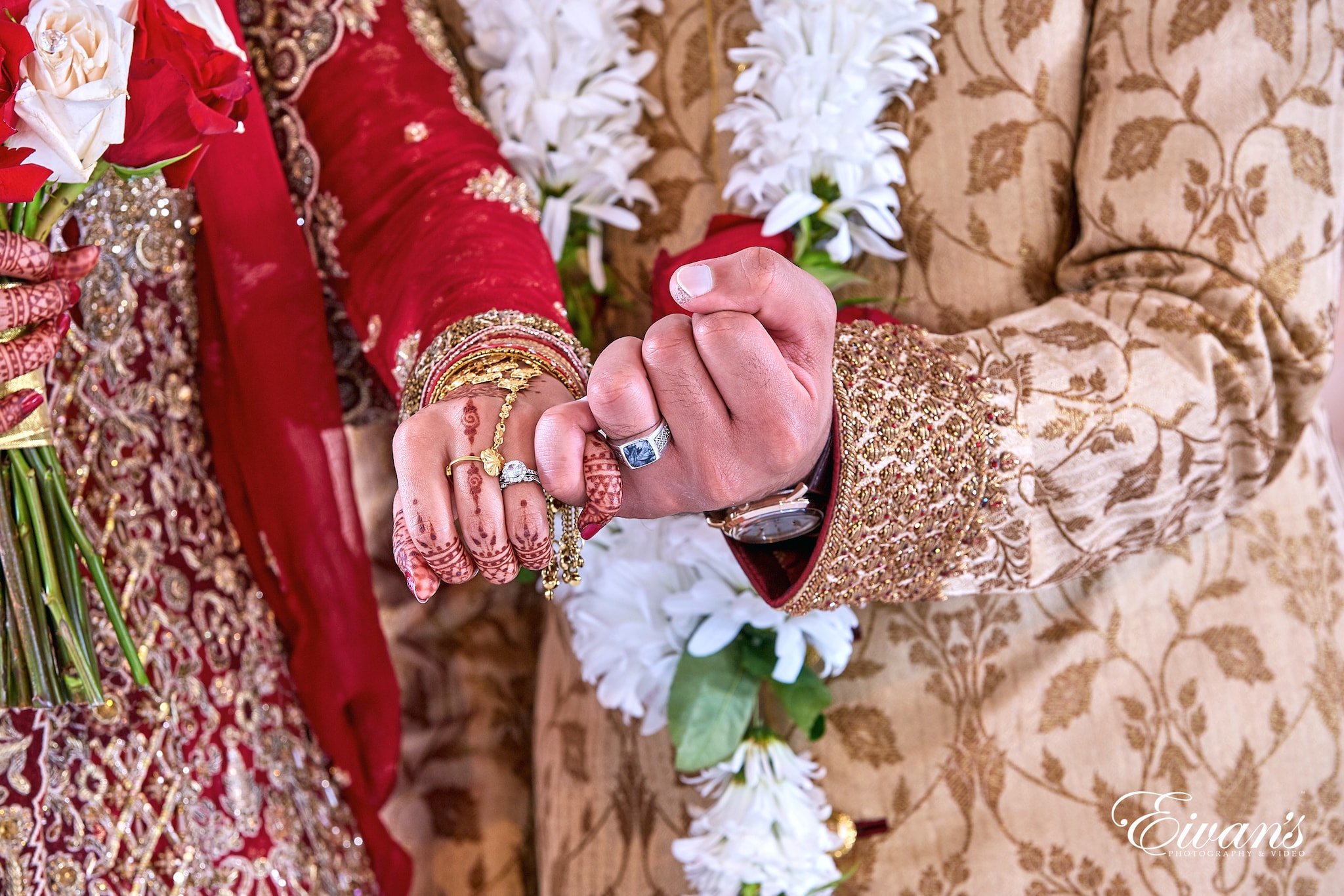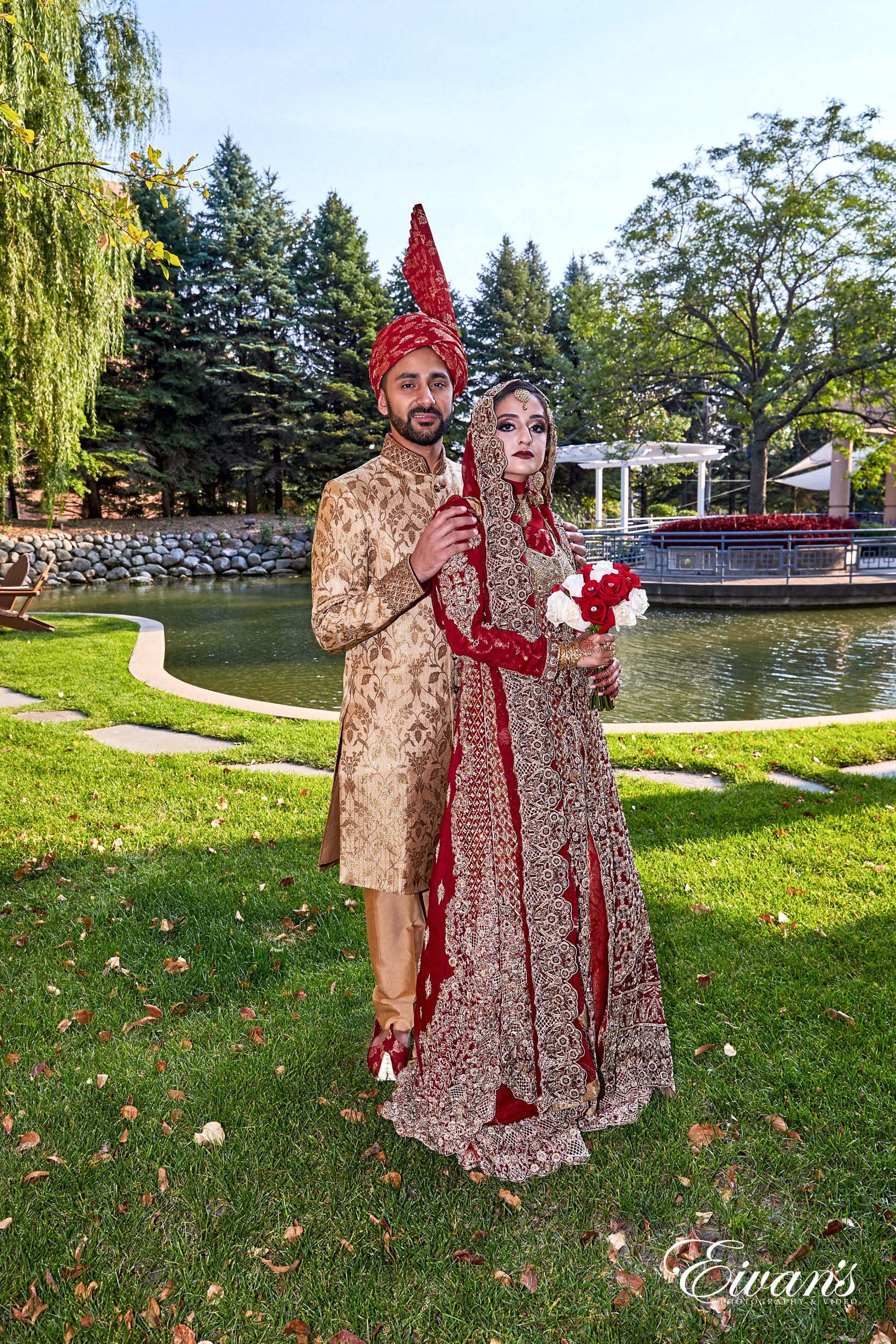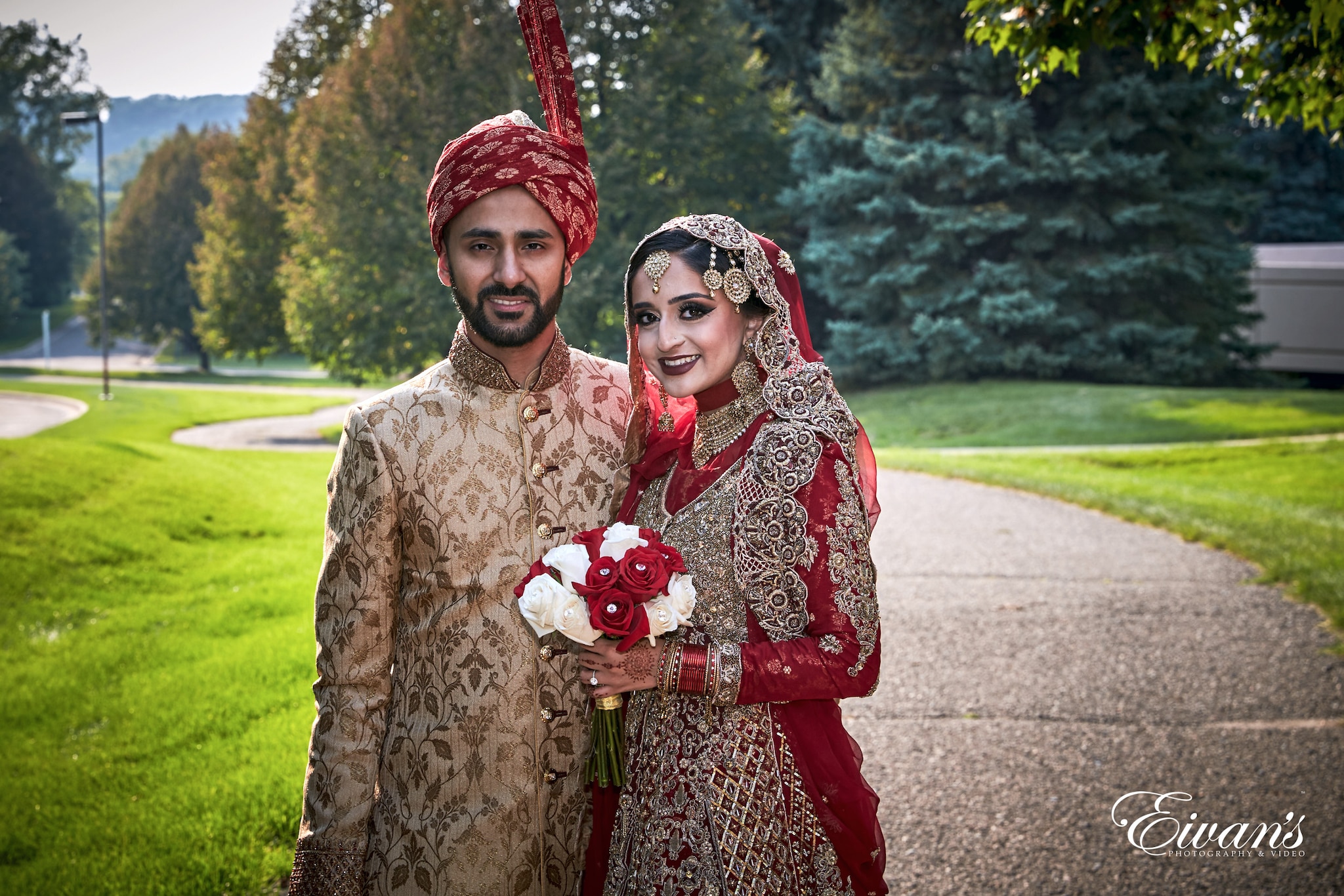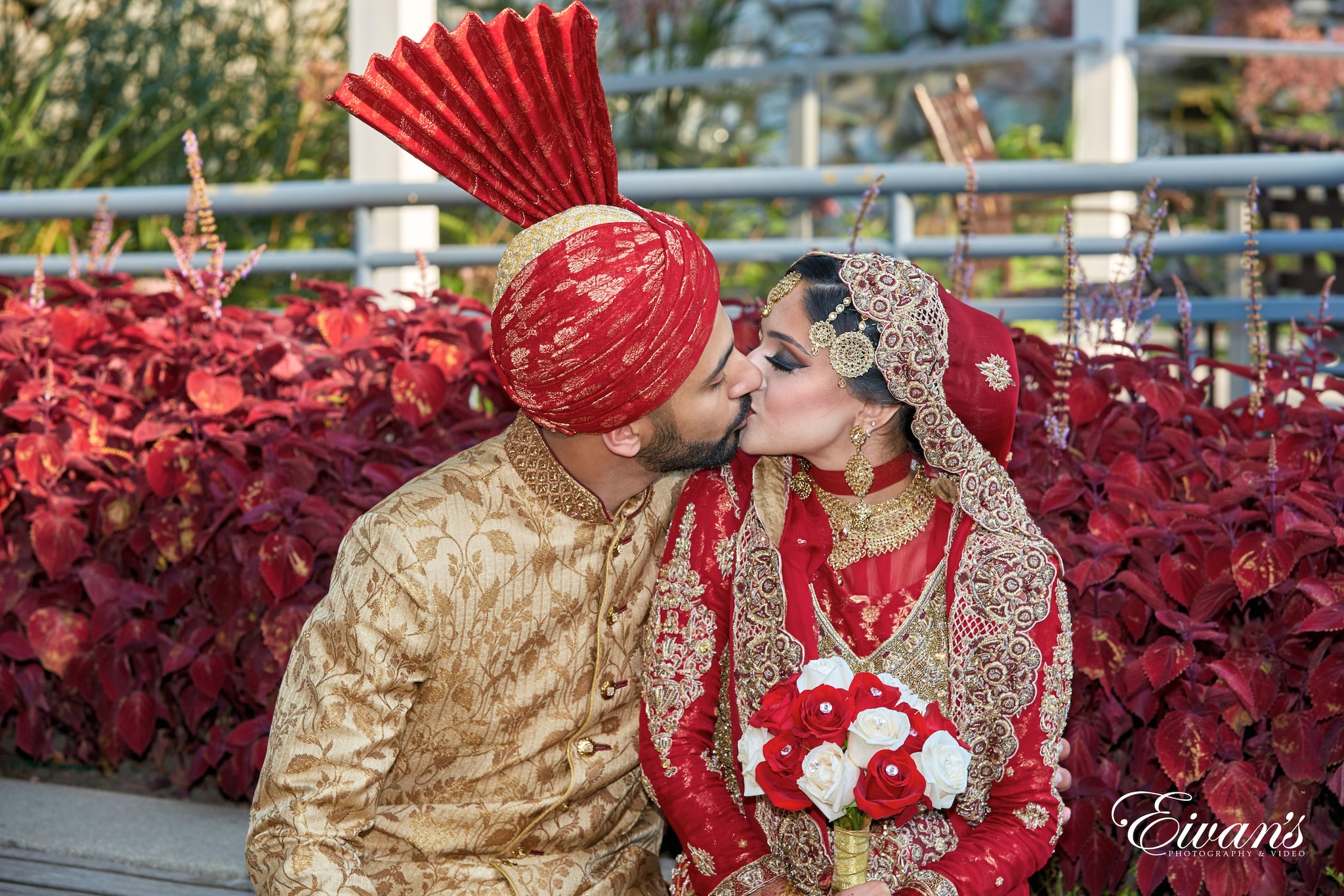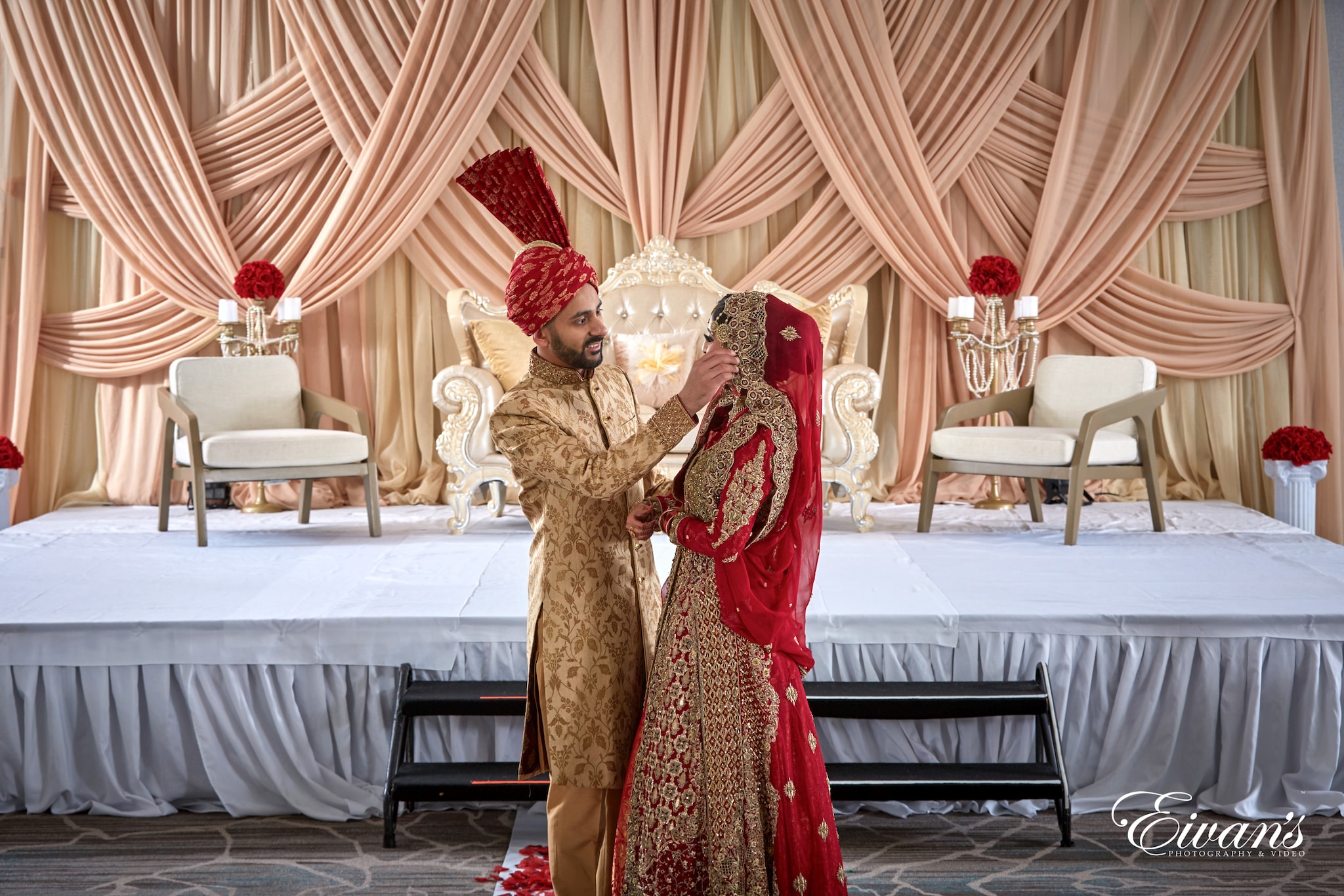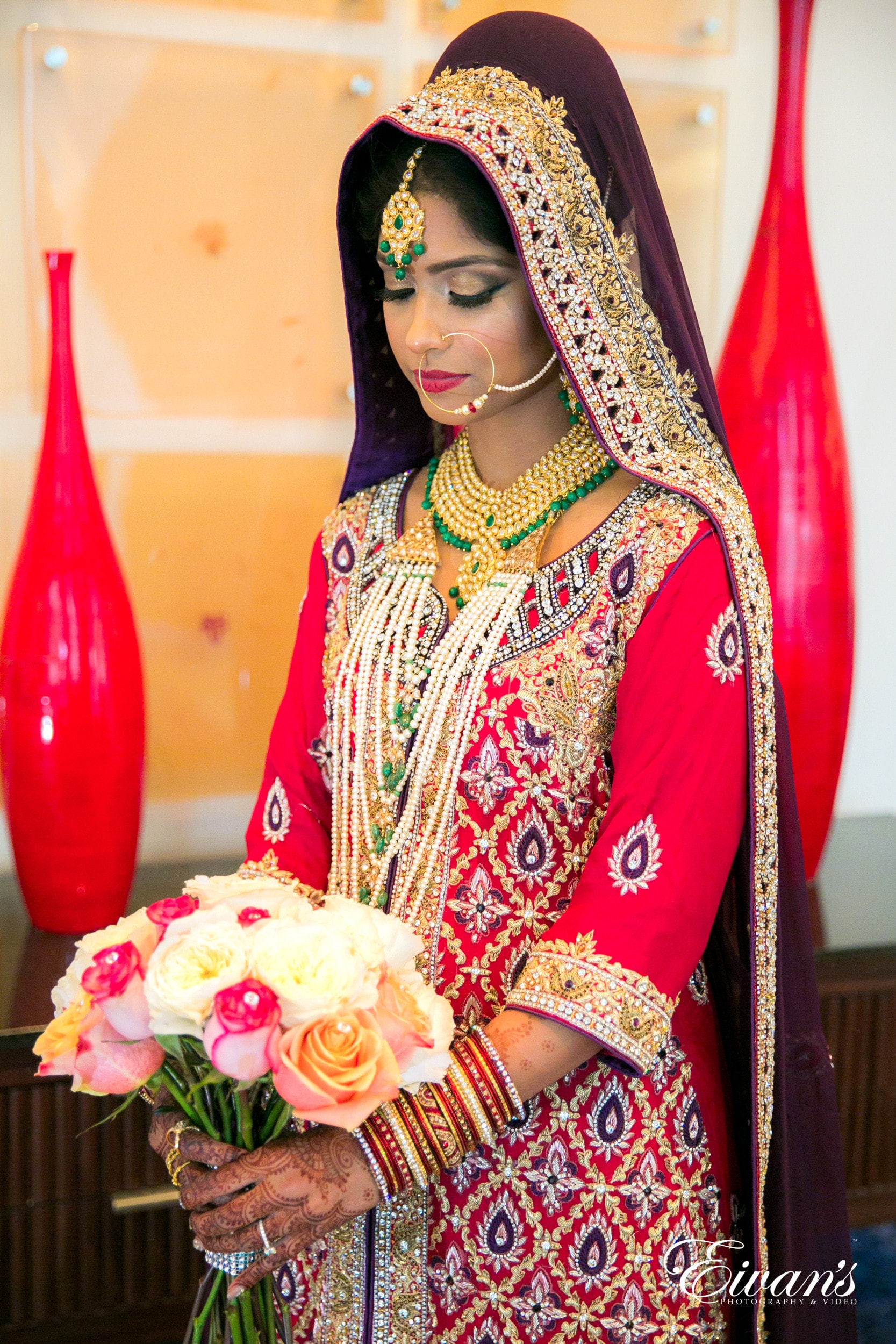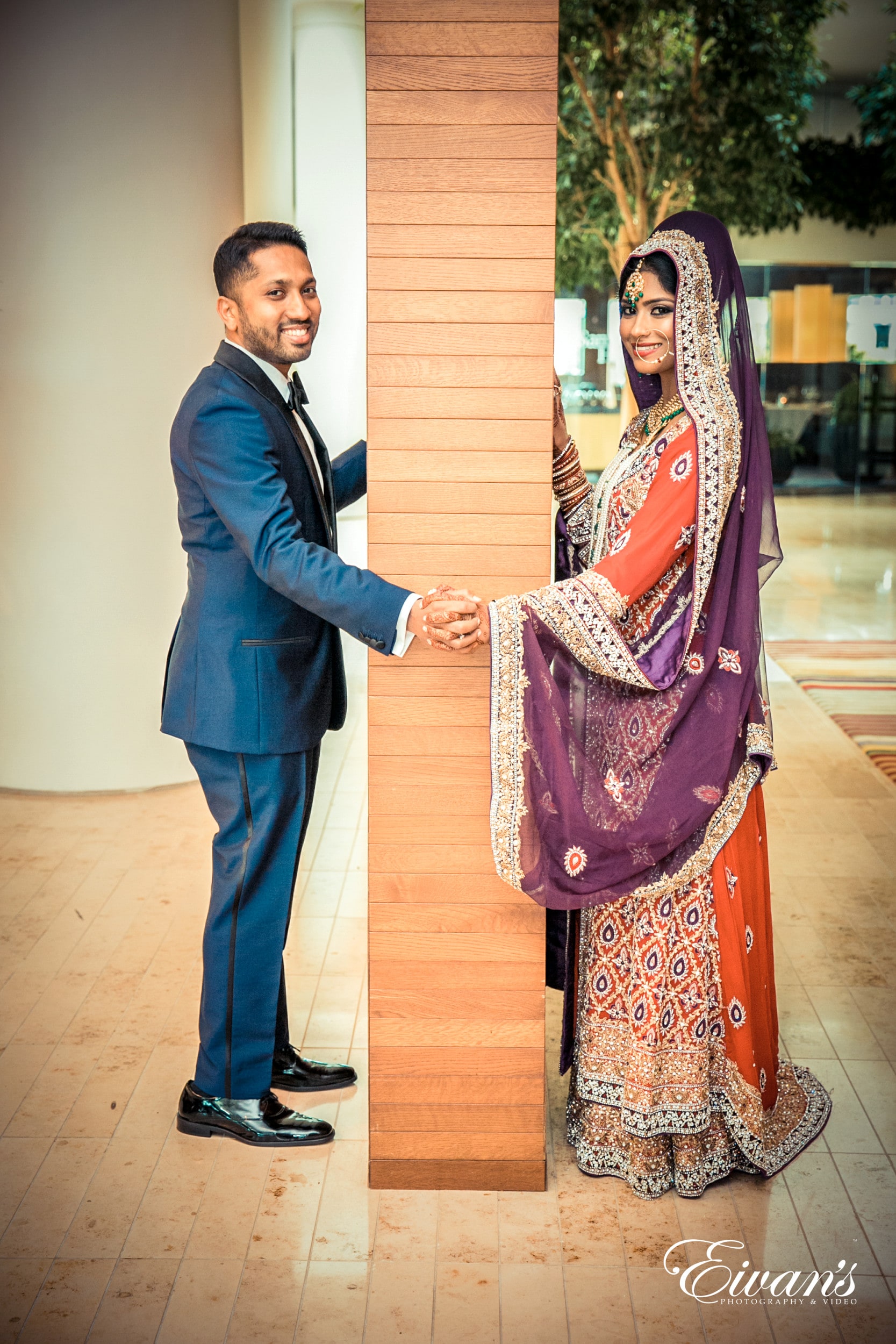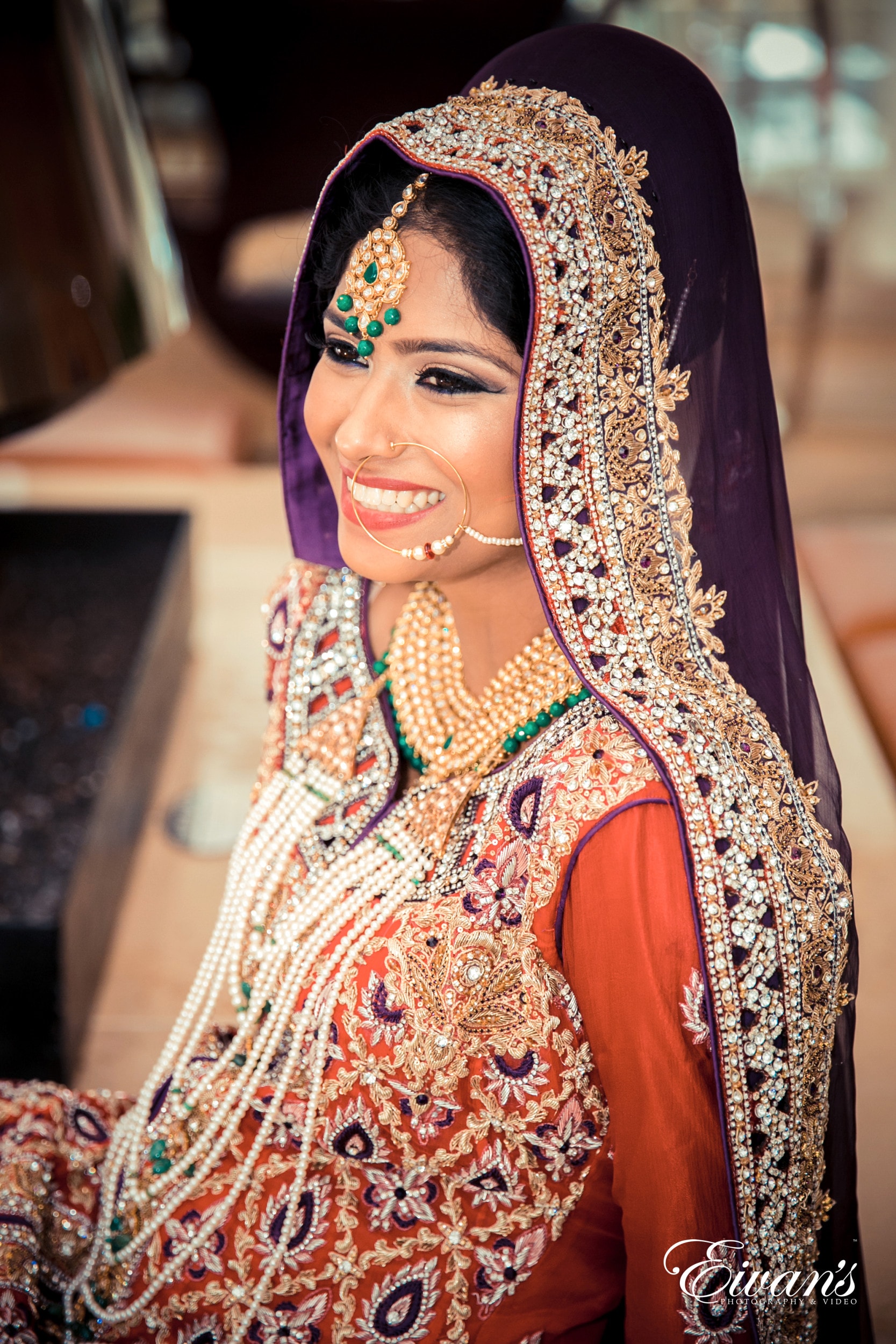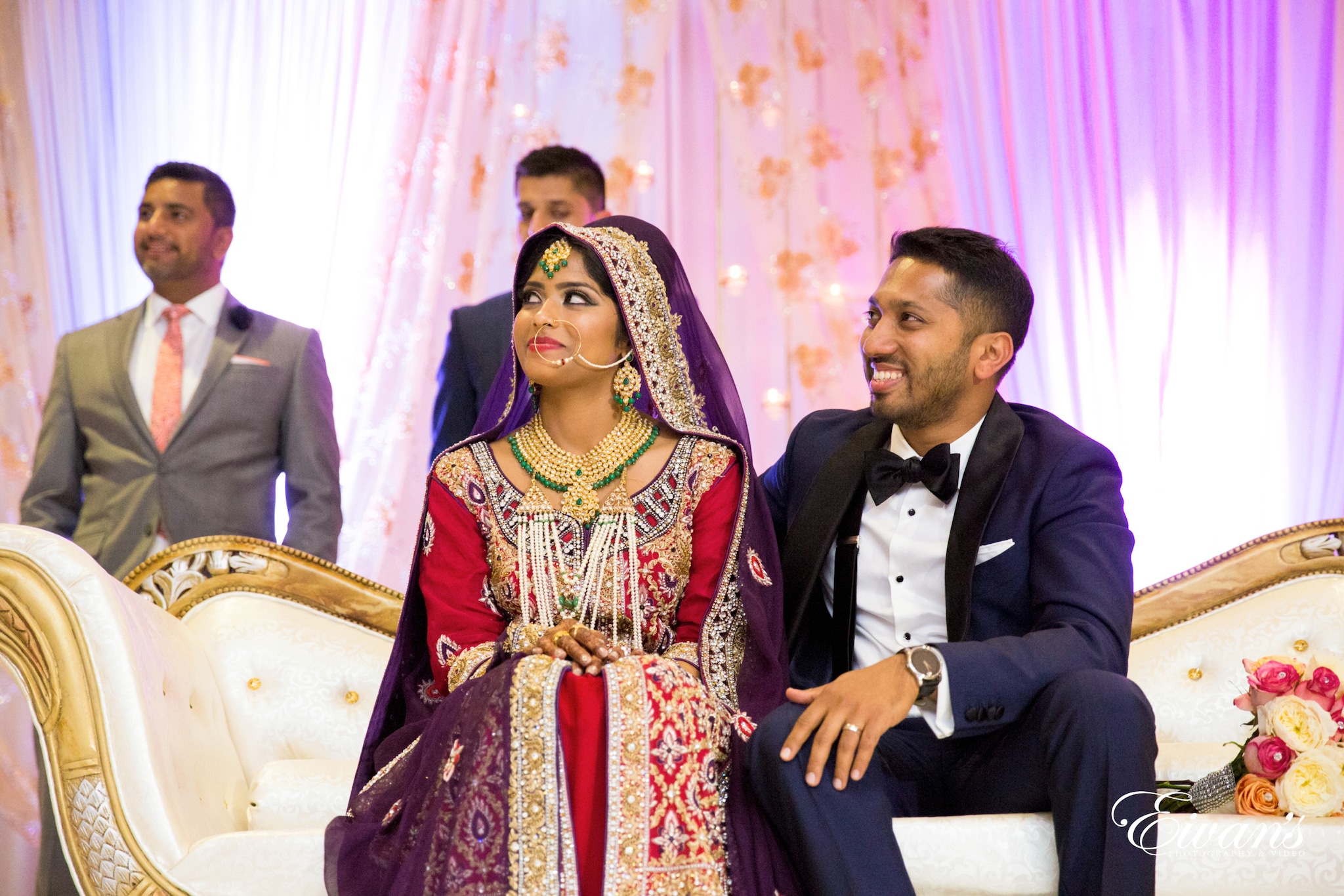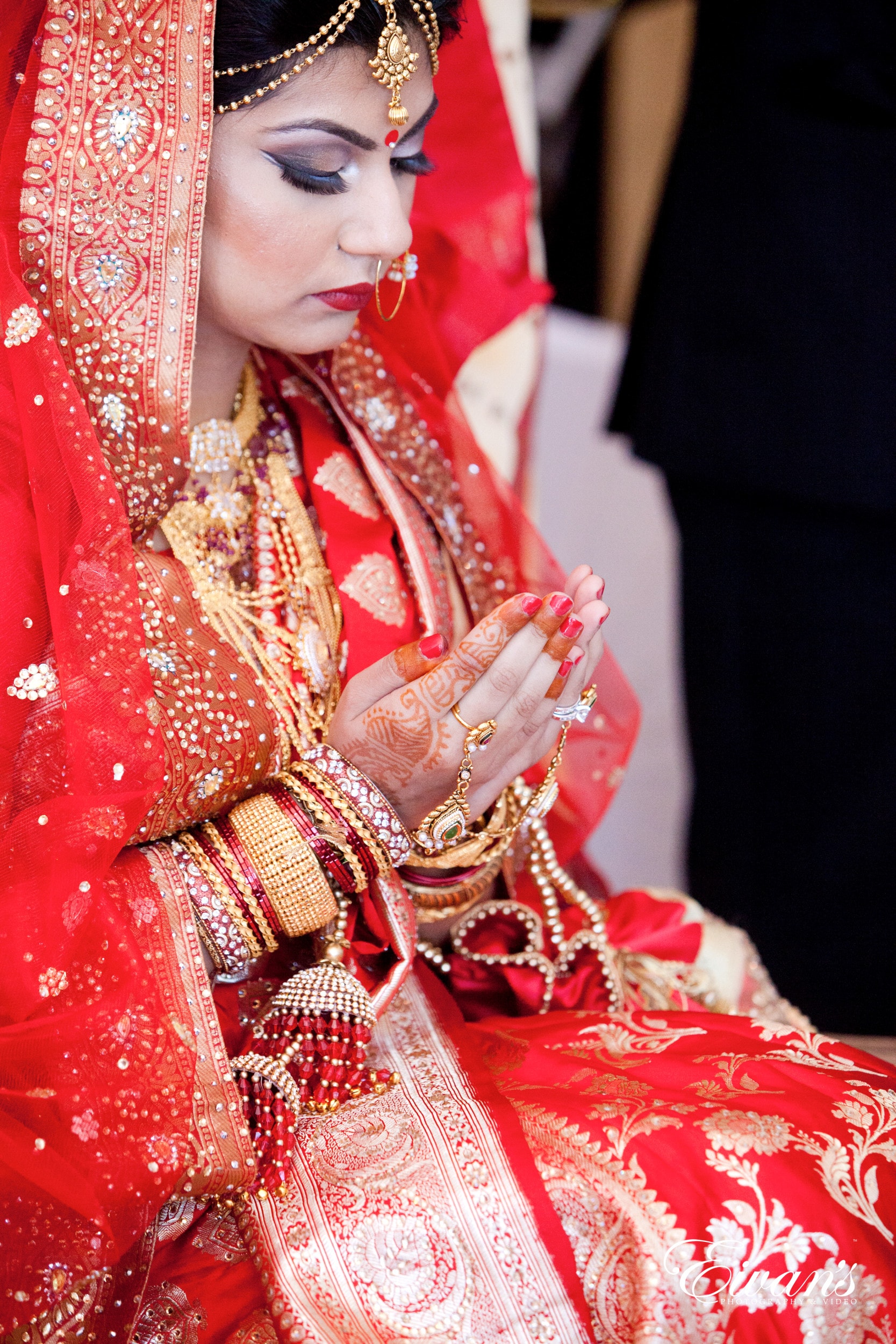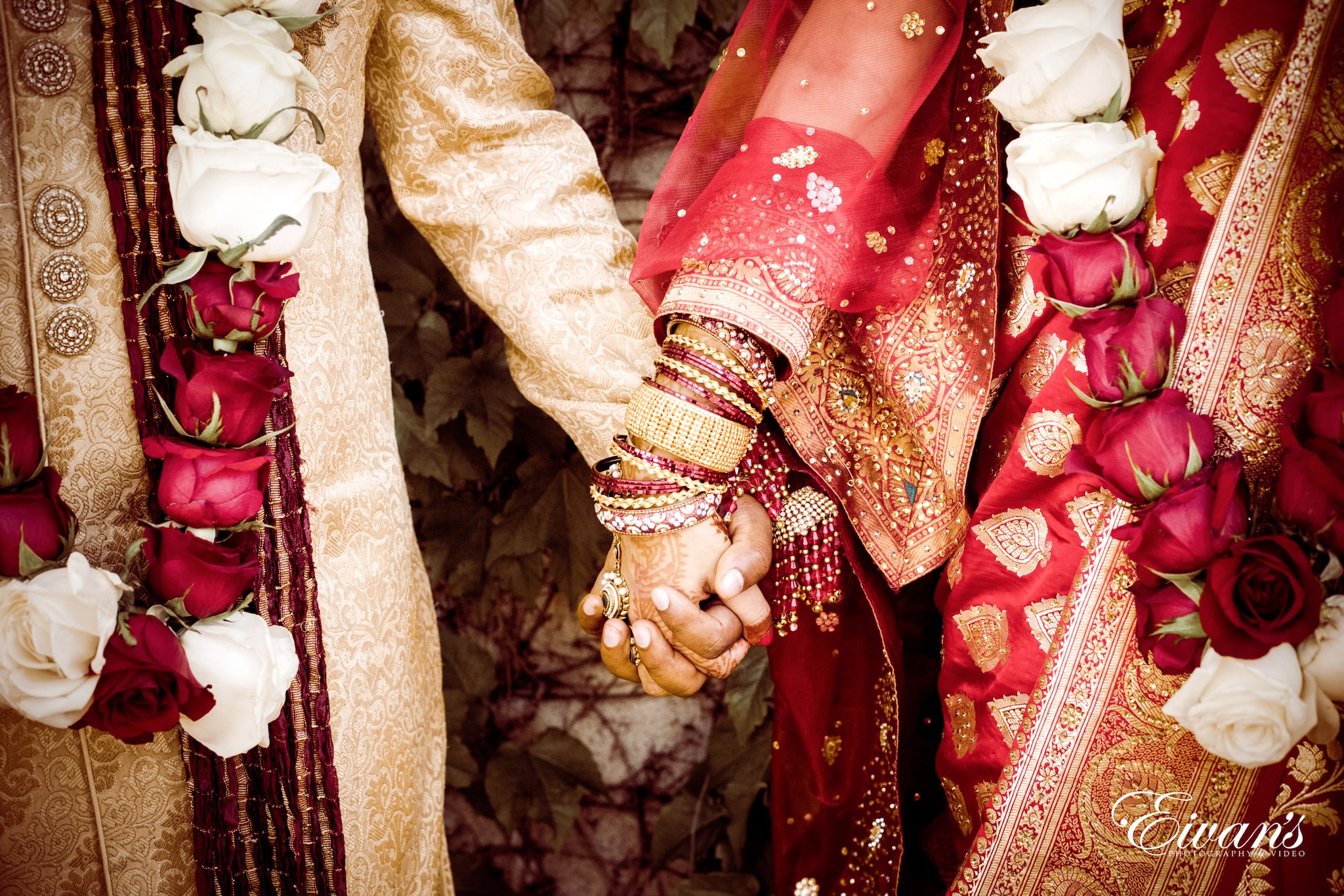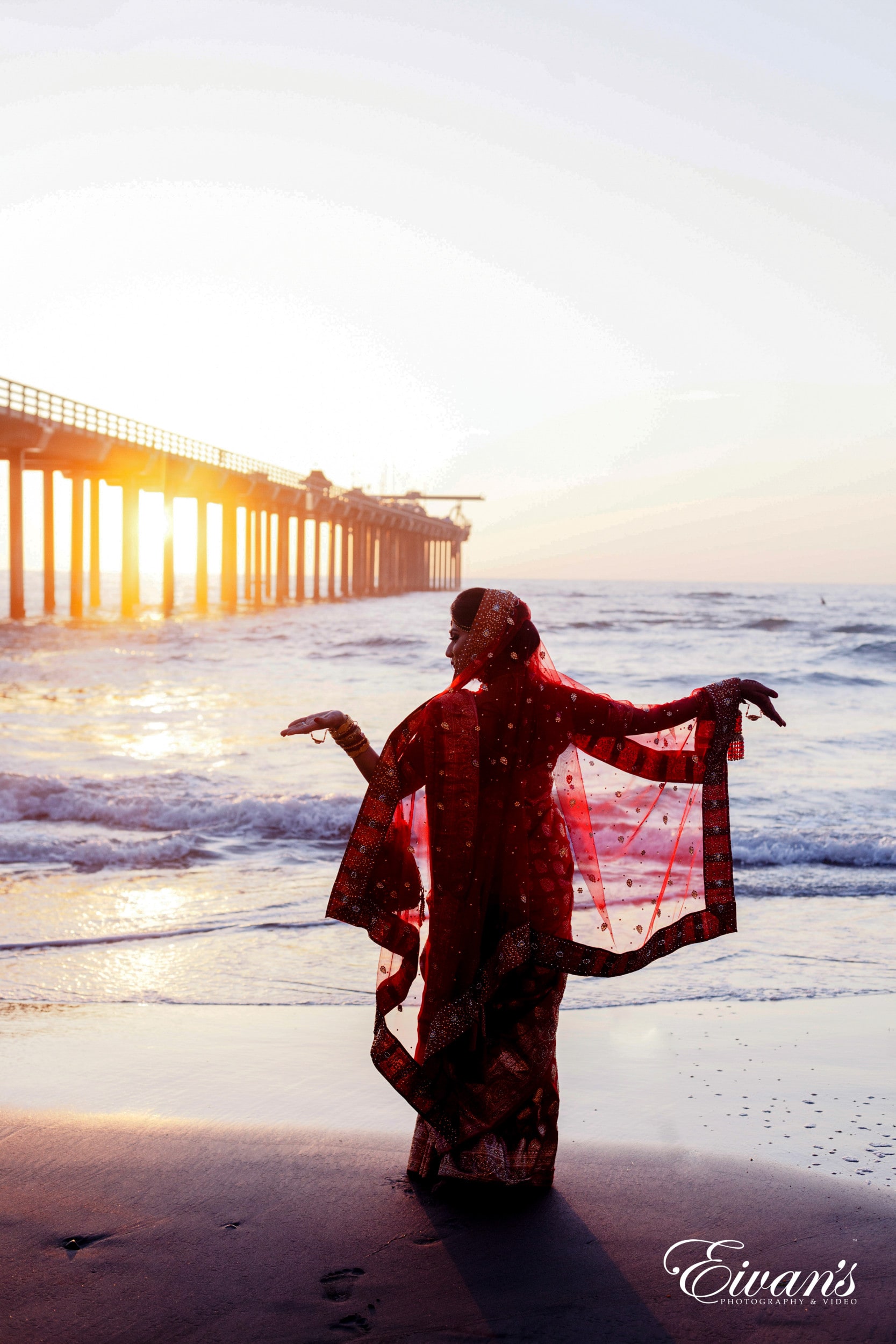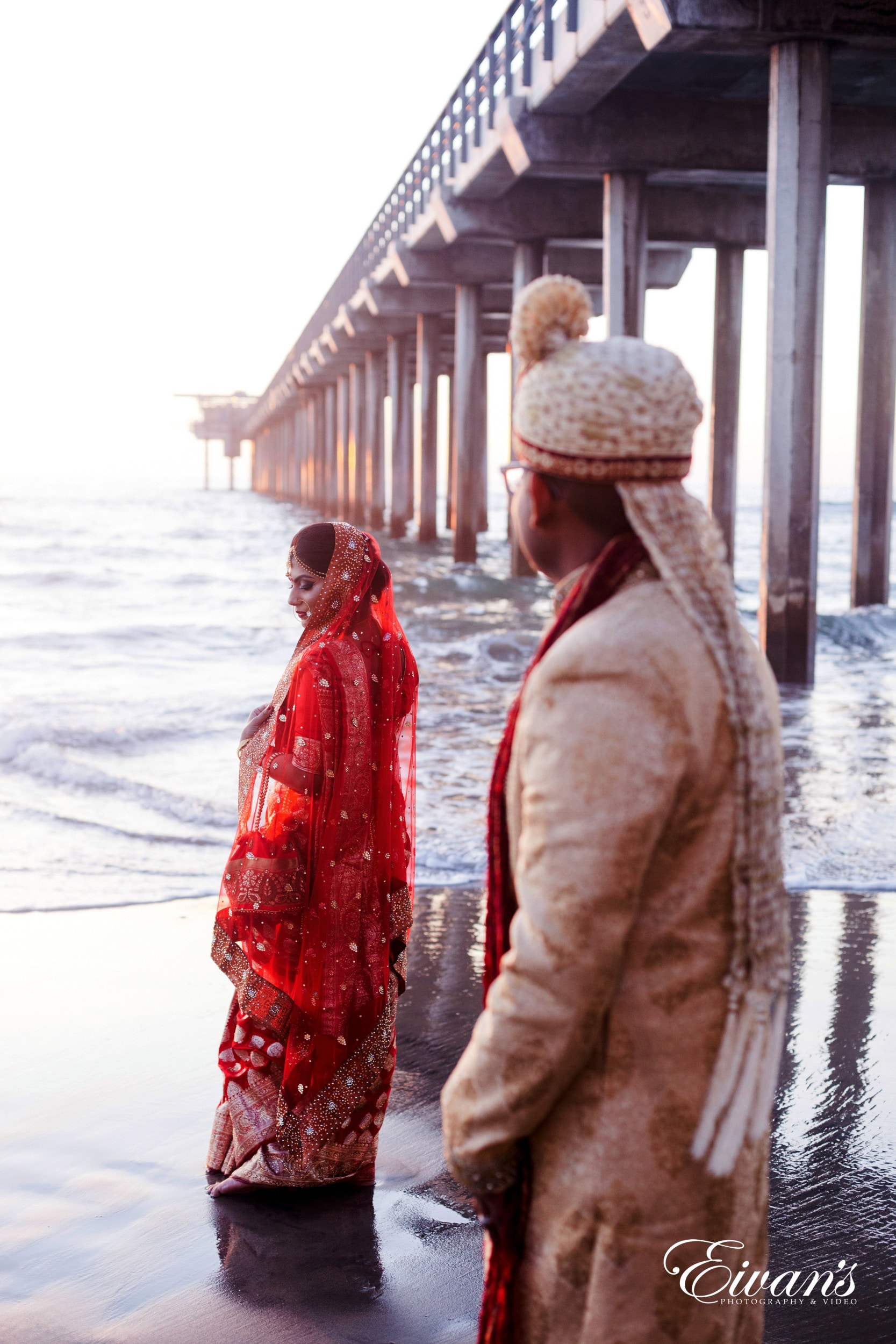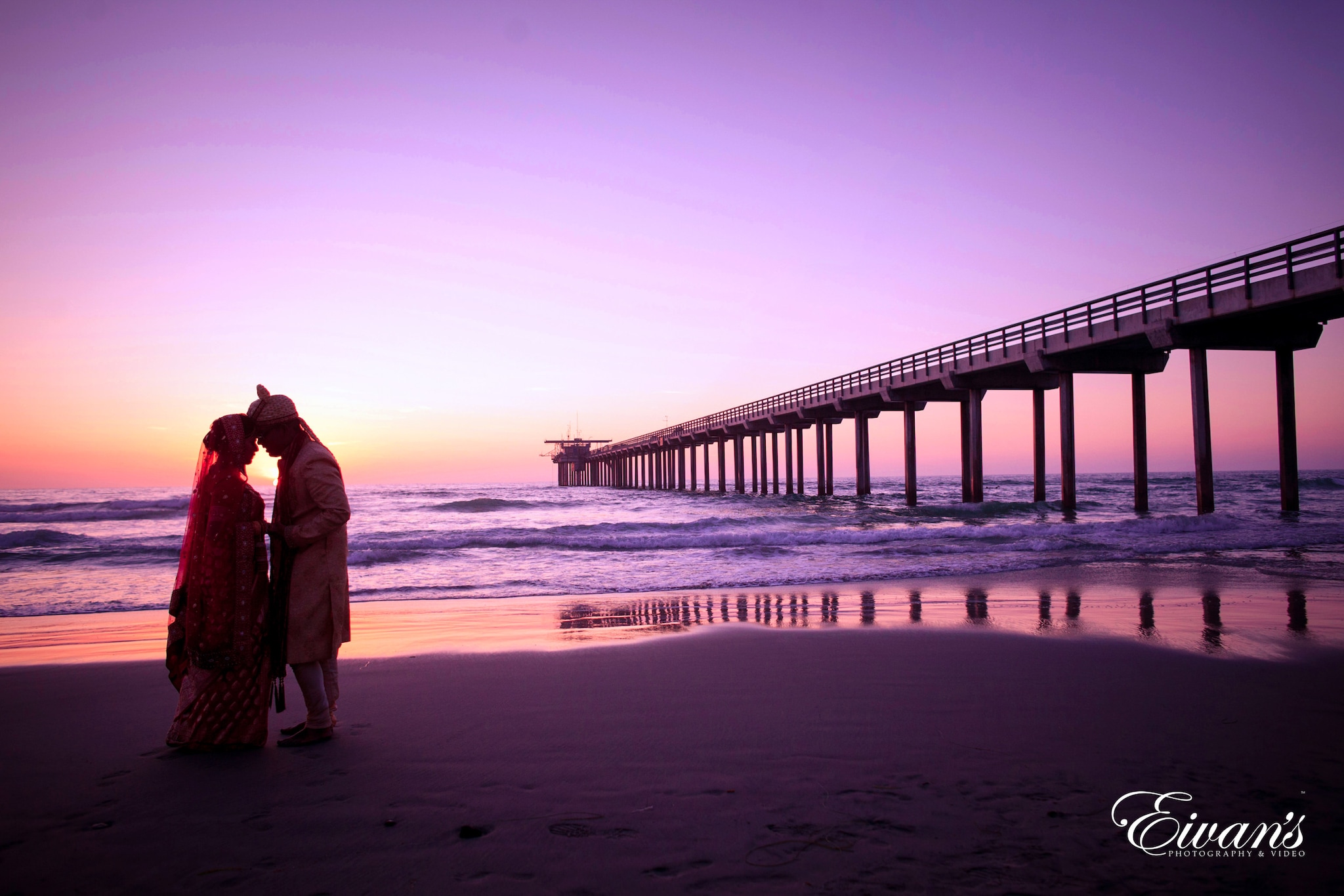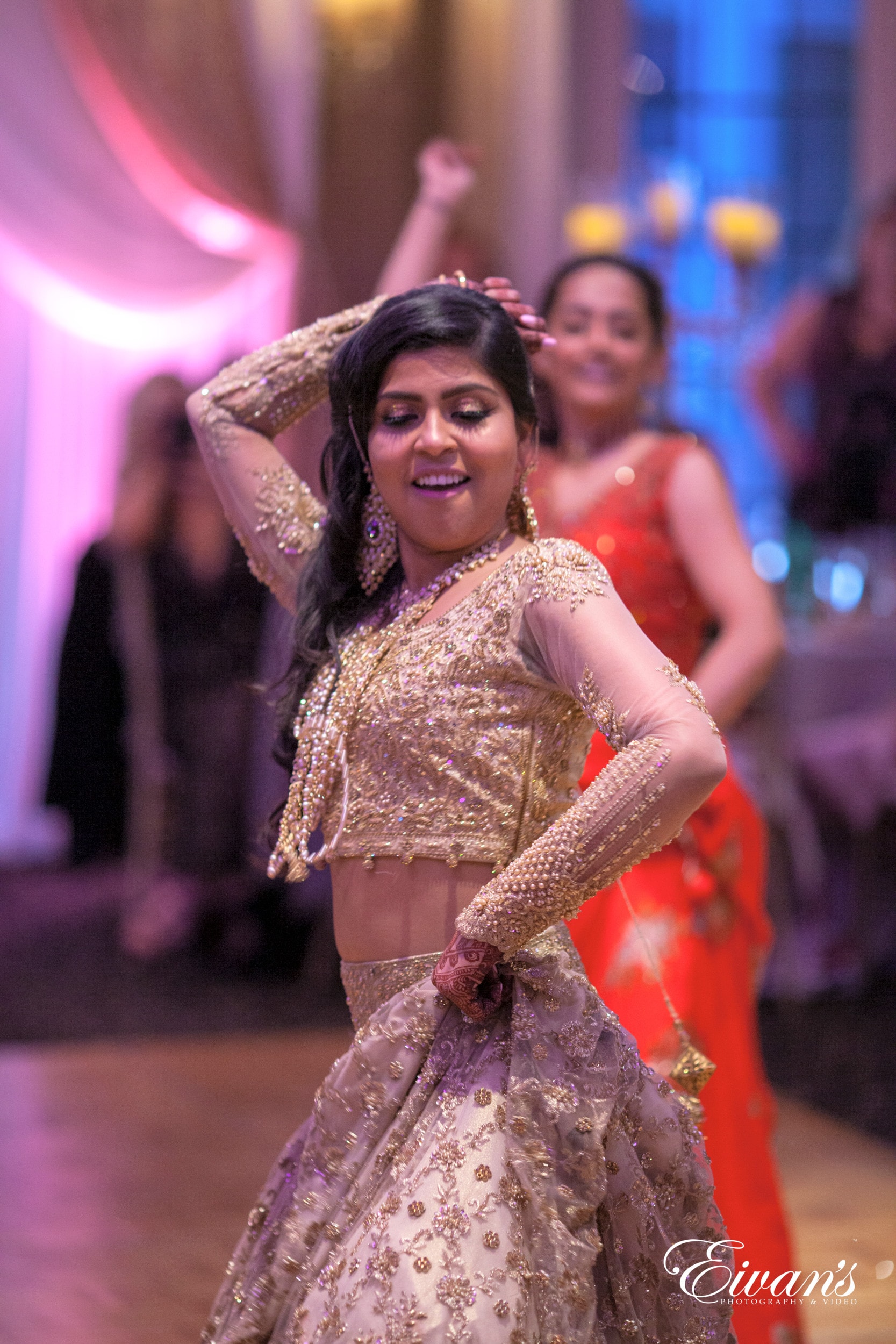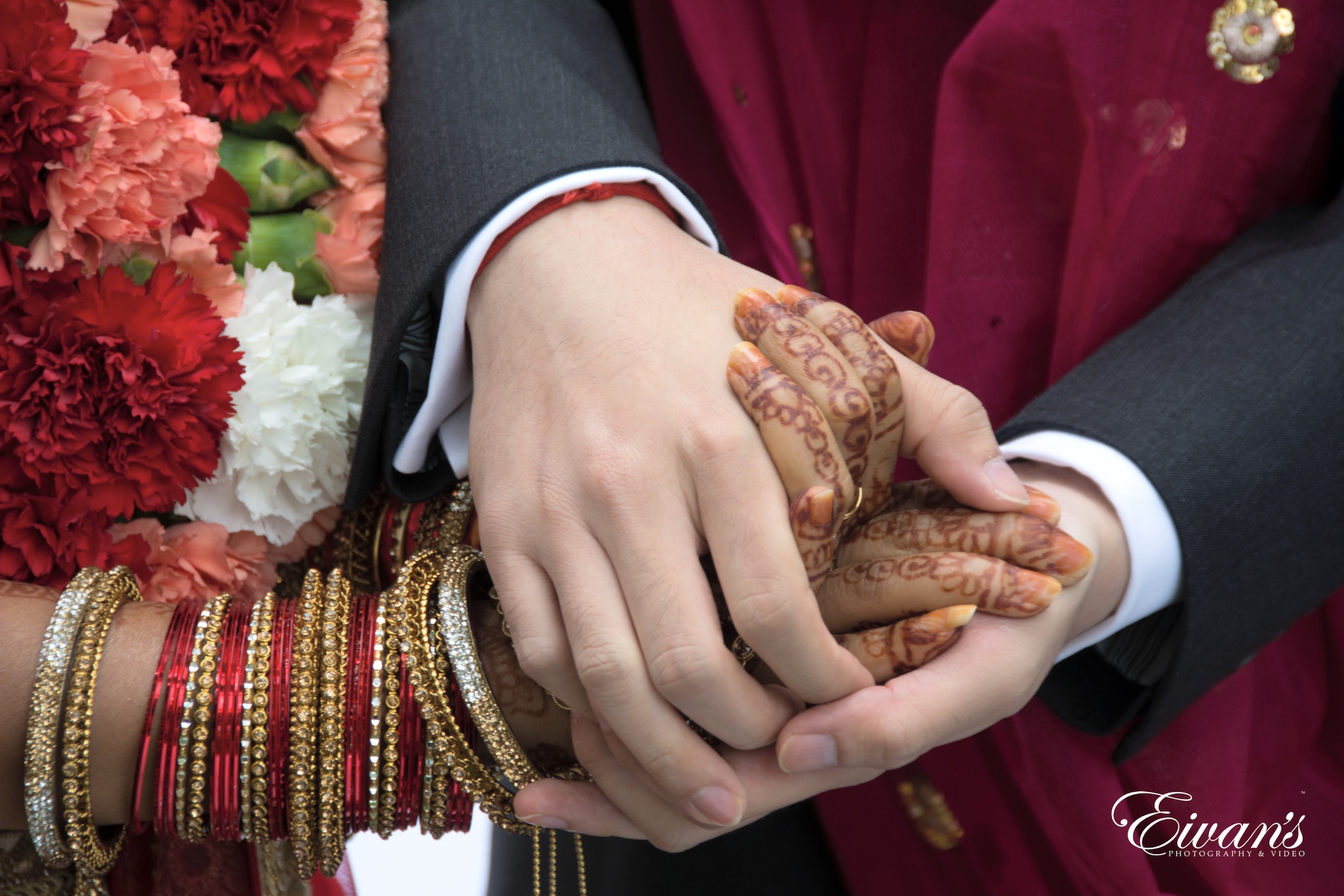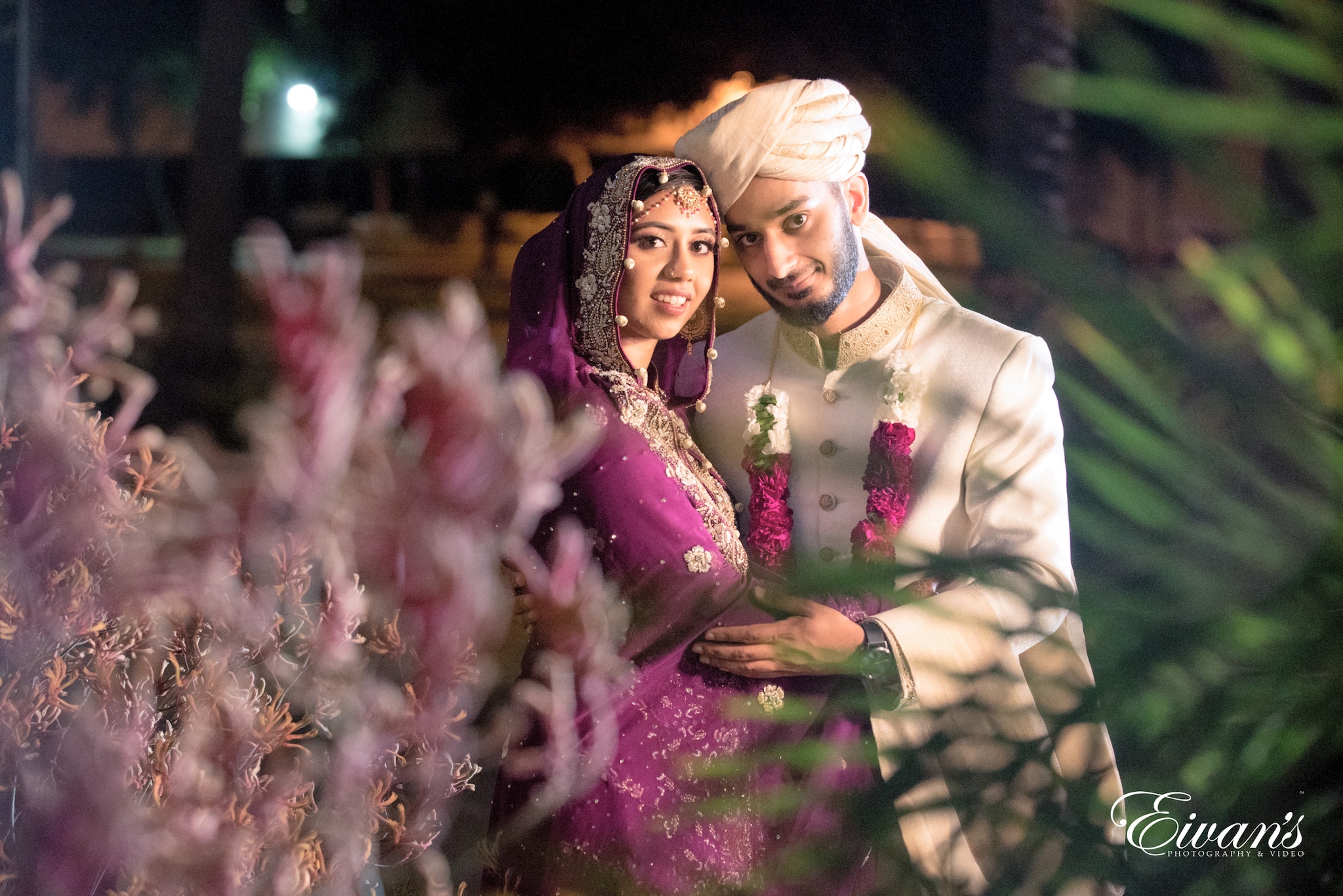Authentic Indian Wedding Traditions That All Hindus Observe
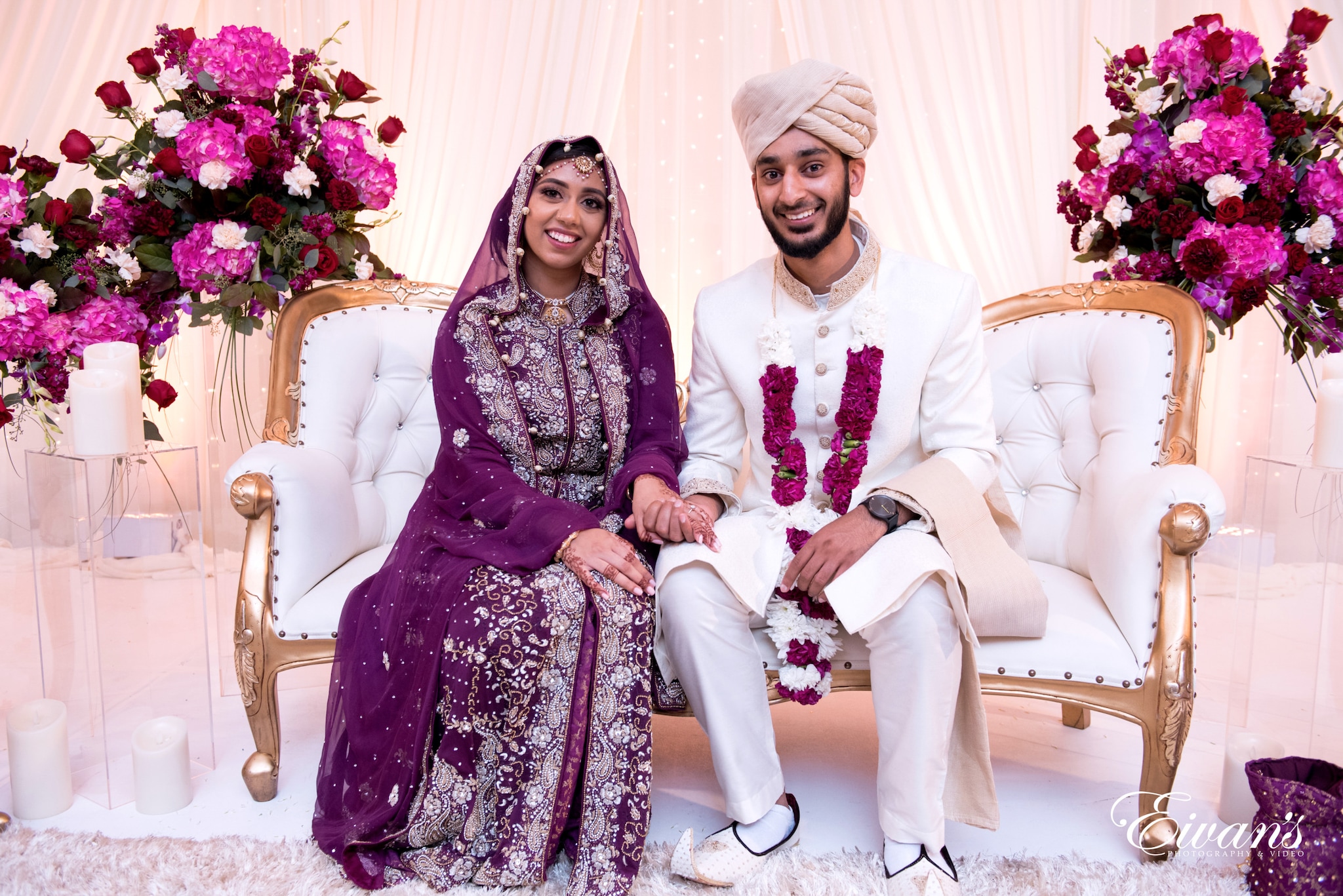
By Eivan’s Wedding Team ![]()
India is one of the few countries that boast of rich cultural heritage that stand out. Indians wedding ceremonies are always known to be magnificent and fun. They are such an epitome of glam. The longstanding traditions are a good measure for any Indian wedding, any time.
Planning an Indian wedding is not for the faint heart, it takes a lot of work to plan one. It involves many traditional events leading up to the wedding. Over 40 different rituals take place within the wedding ceremony. If not well prepared, it can be quite overwhelming.
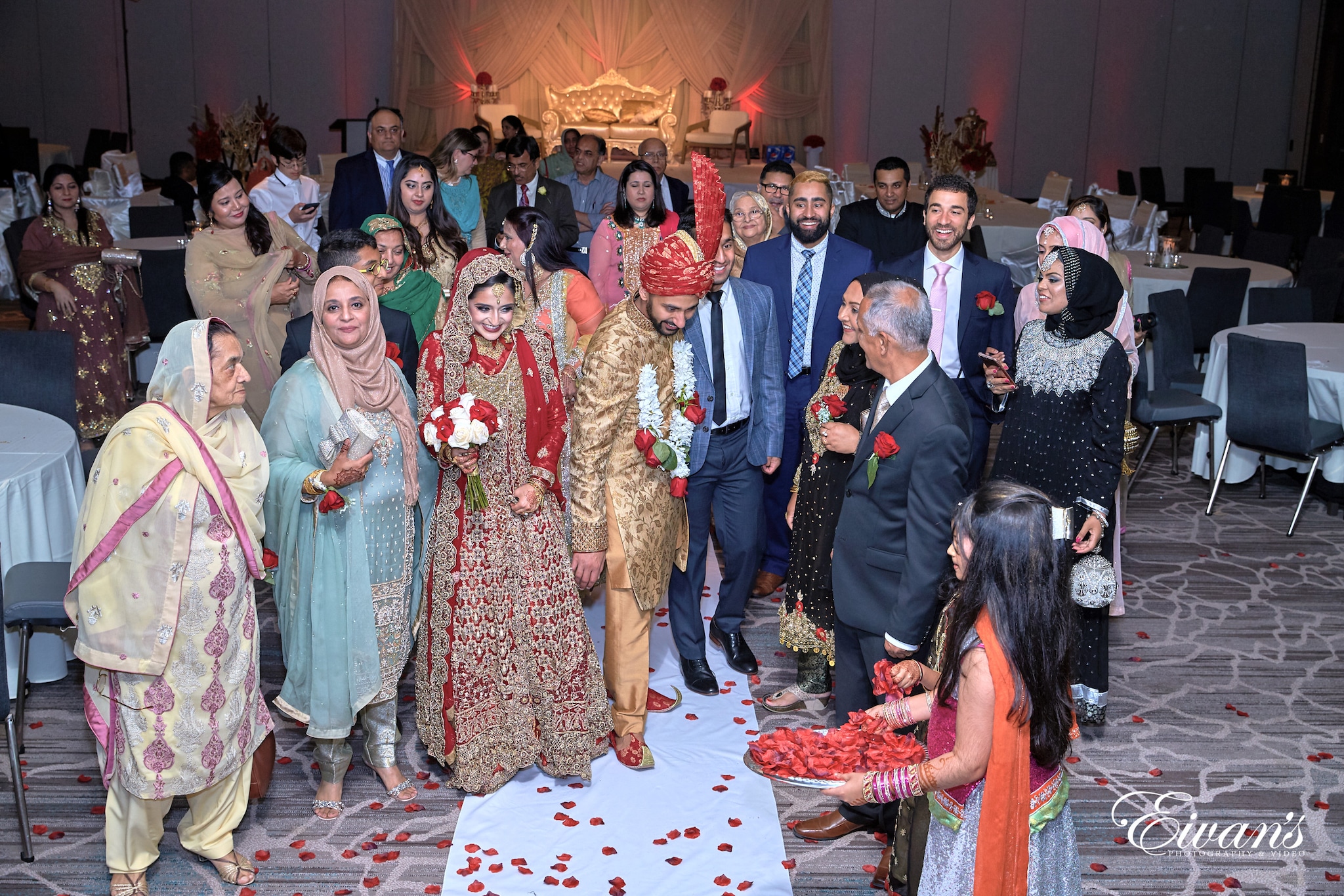
Here is a detailed feature on Indian Wedding Traditions
The Pithi
(pi-thee)
This is a ritual performed separately at the bride’s and groom’s homes meant to bring good luck. Turmeric rose water and chick flour paste – the Pithi is applied to the groom/bride’s skin. The thick yellow paste brightens their skin tone and bestows blessings upon them. This happens in preparation of the engagement ceremony.
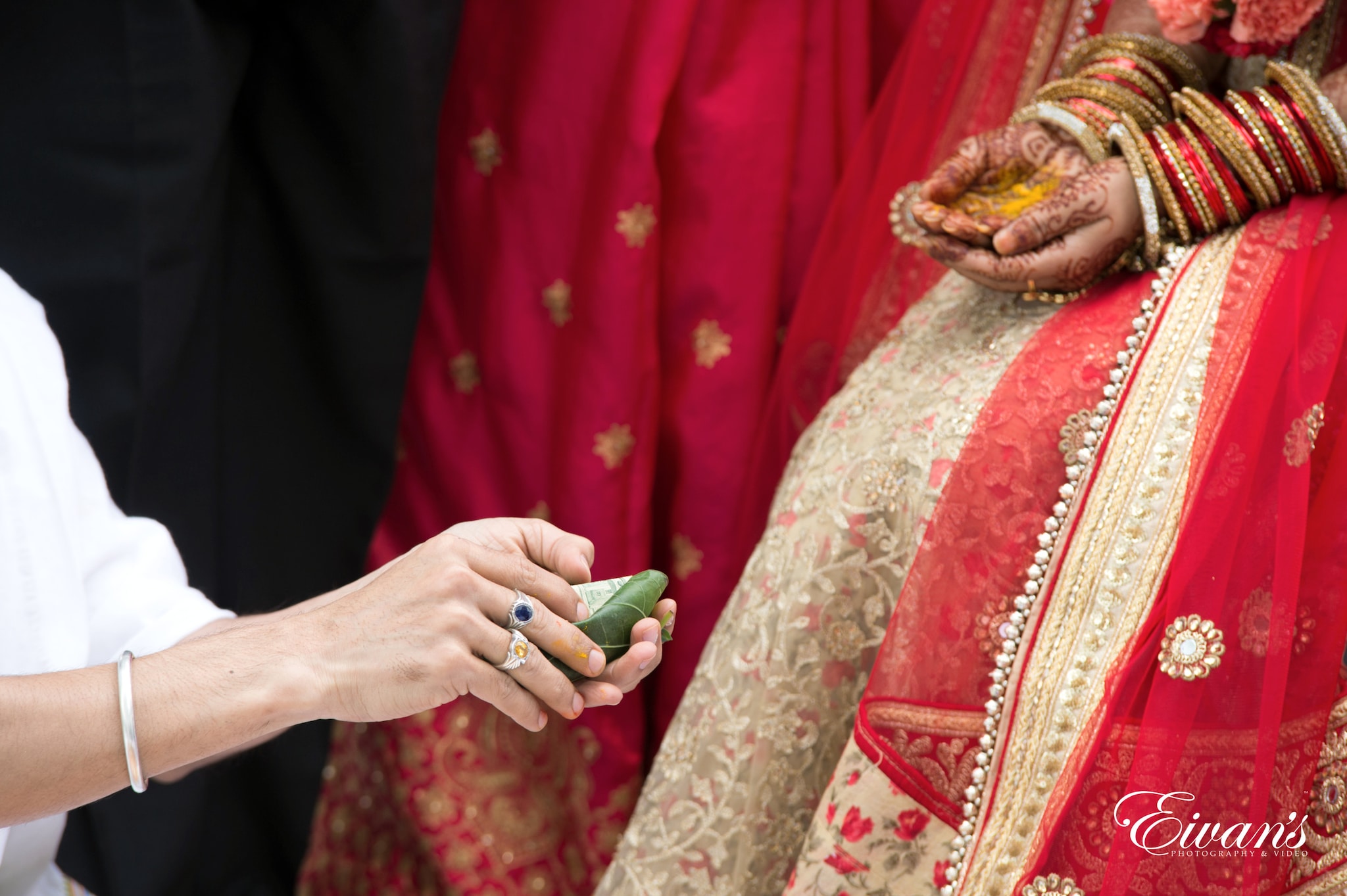
The Engagement
Indians have a lengthy process of the engagement. This serves as an agreement between the families of the said bride and groom. During engagement a wedding date is also set. The wedding ritual begins 15 days before the wedding with Barni Band–hwana. During this ritual, a piece of thread is tied to the hands of the bride and groom. The parents bless them and ask for a safe wedding day.
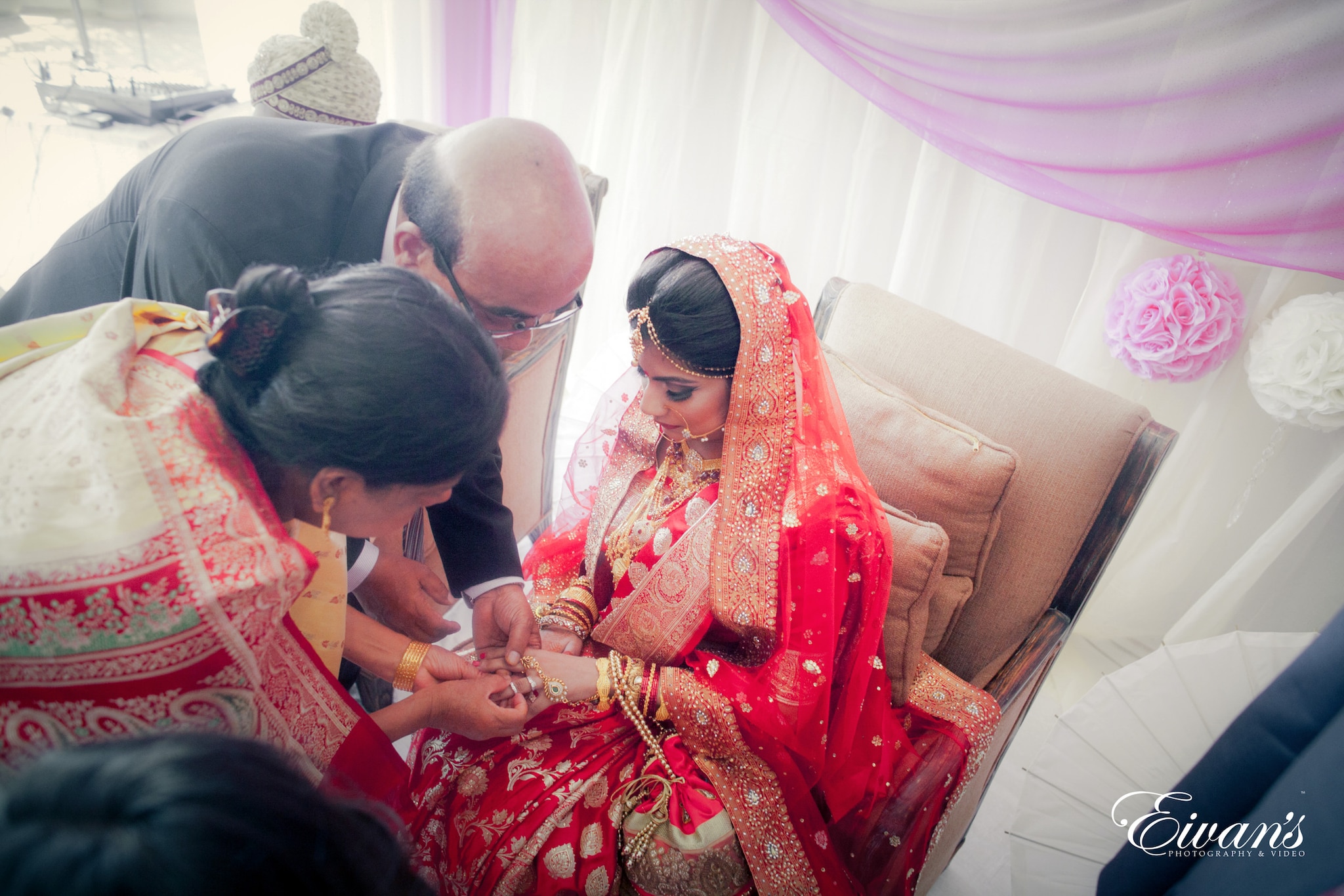
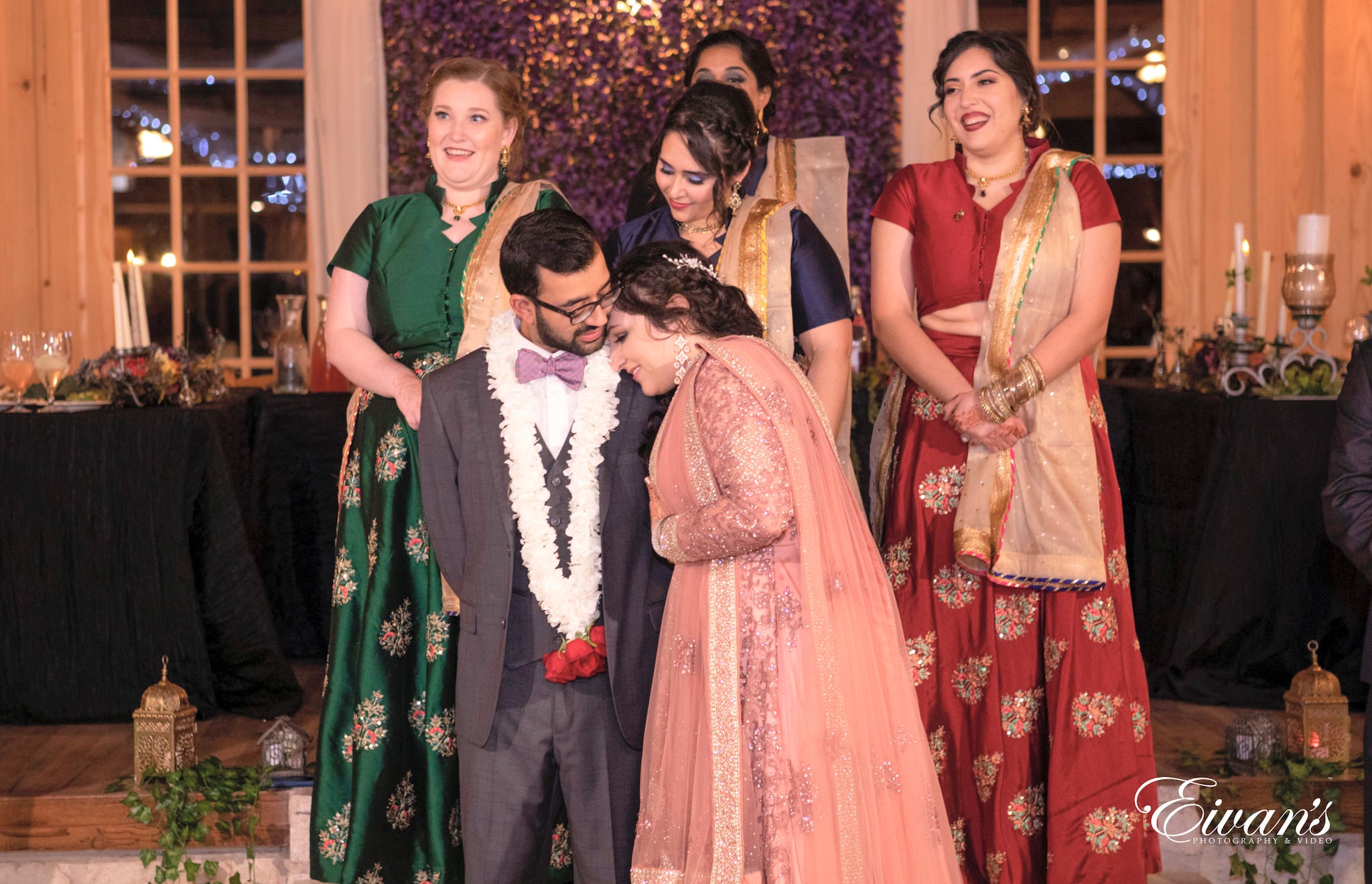
Sangeet and Mehendi
(sun-geeth and men-dee)
Sangeet is a ceremony where the relatives and friends of the couple get together to know each other. This ceremony takes place at the bride’s home. In this ceremony, the bride and her female family members take part in the Mehendi rituals.
These rituals involve an application of henna on the bride’s hands and feet. They believe henna promotes fertility and evokes evil spirits for the couple. The stronger the color of the henna the stronger the bond between the newlyweds. The deeper the henna color, the better the relationship with the mother in law. The bride to be allows the henna to dry for 8 hours for best results.
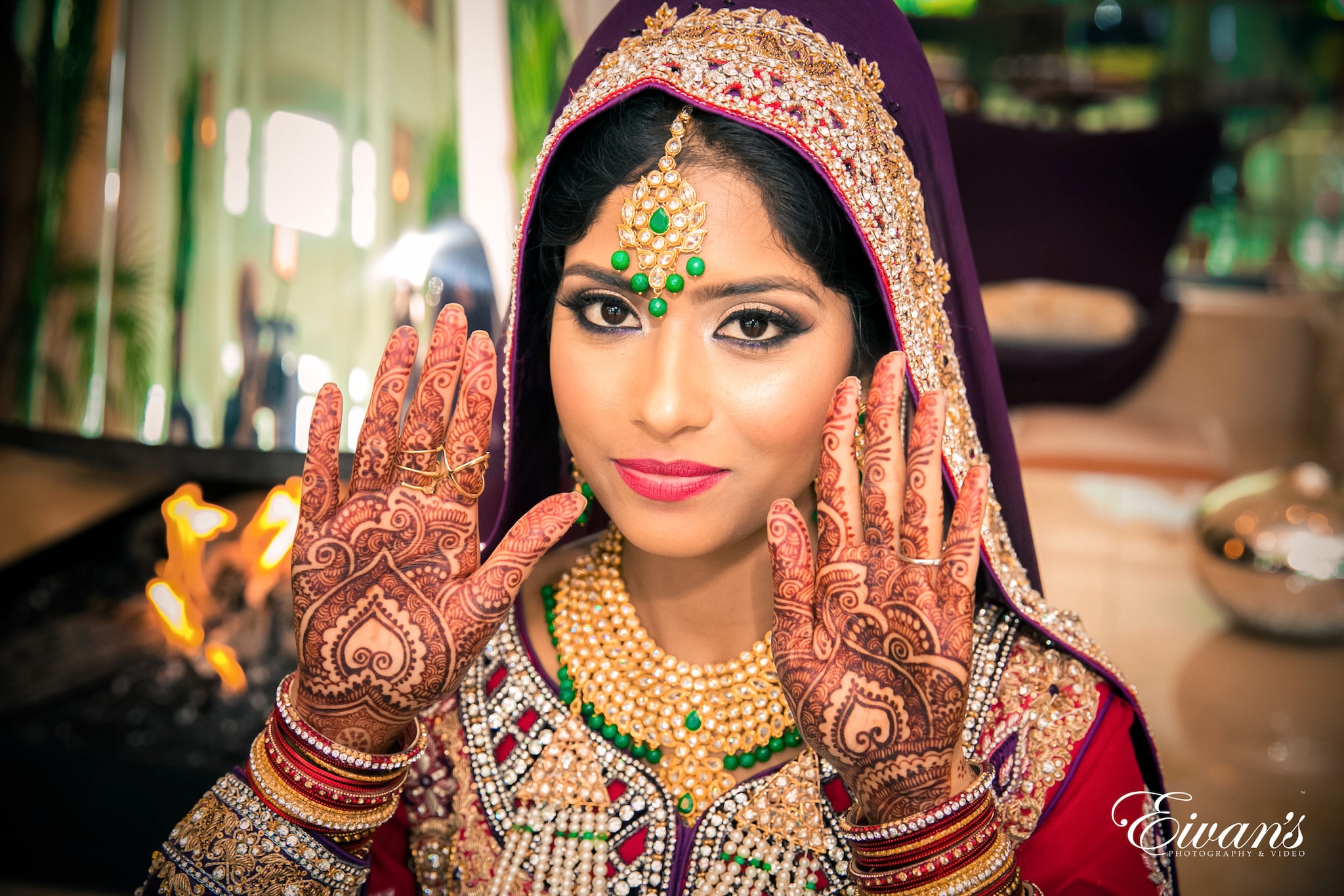
The wedding invitations
The Hindu traditions have created a very close knit in Indian families. Wedding invitations are only for the family close and close family friends.
Indians believe celebrations are to bring families and close friends together. The friends invited are the ones the families can call the real friends of the family. A typical Indian wedding have about 300 – 500 guests from both families.
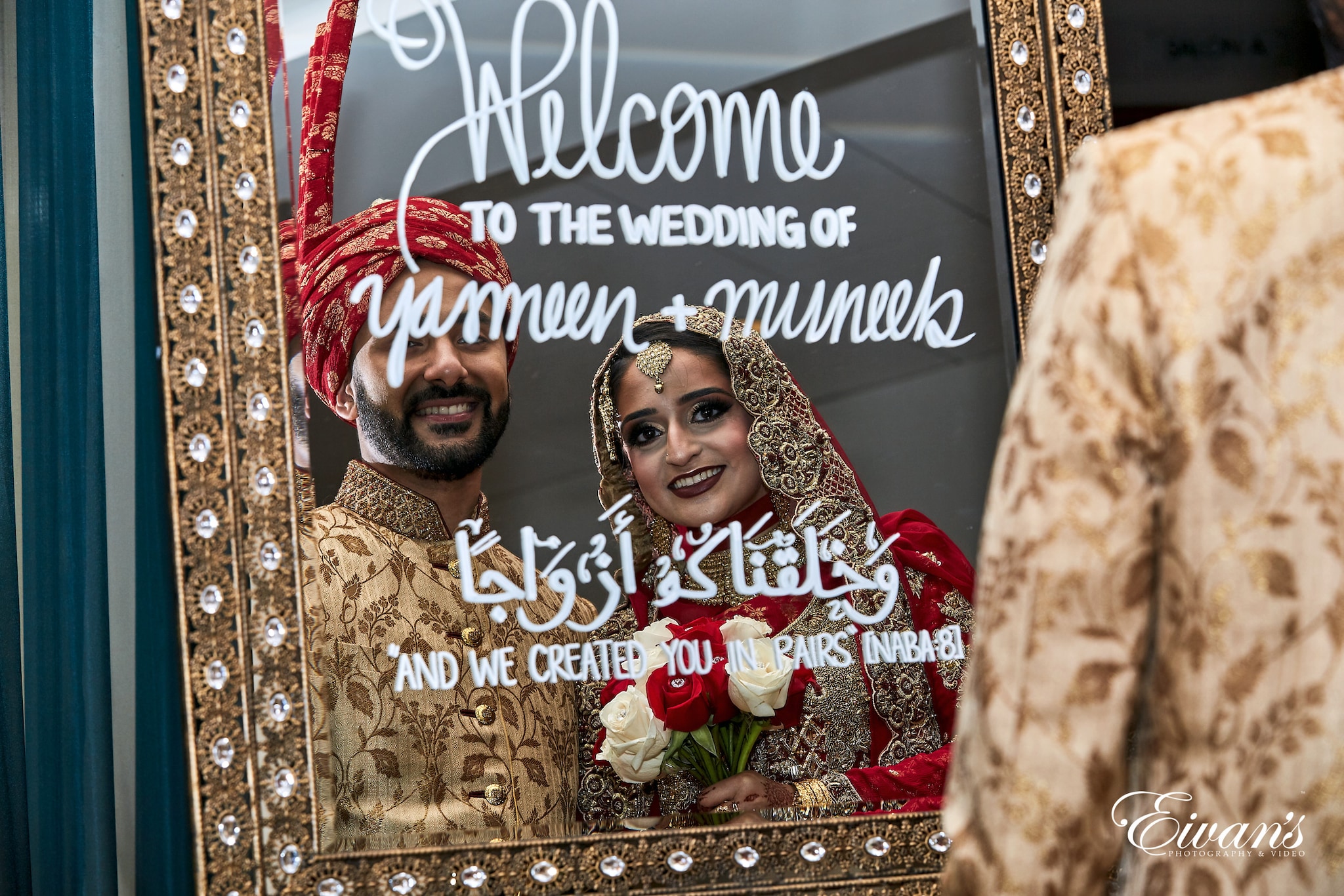
The wedding procession
The groom’s procession is the Baraat. The groom arrives in a white horse! Songs and dance from family and relatives surrounds him. He meets the bride and her family at the entrance of the venue. The bride’s mother welcomes the groom and the rest of the family exchange pleasantries.
The bride and the groom exchanges Milni Mala, floral garlands, to wear around their necks. This is a symbol of their acceptance of one another. The groom is then led to the altar to wait for the bride.
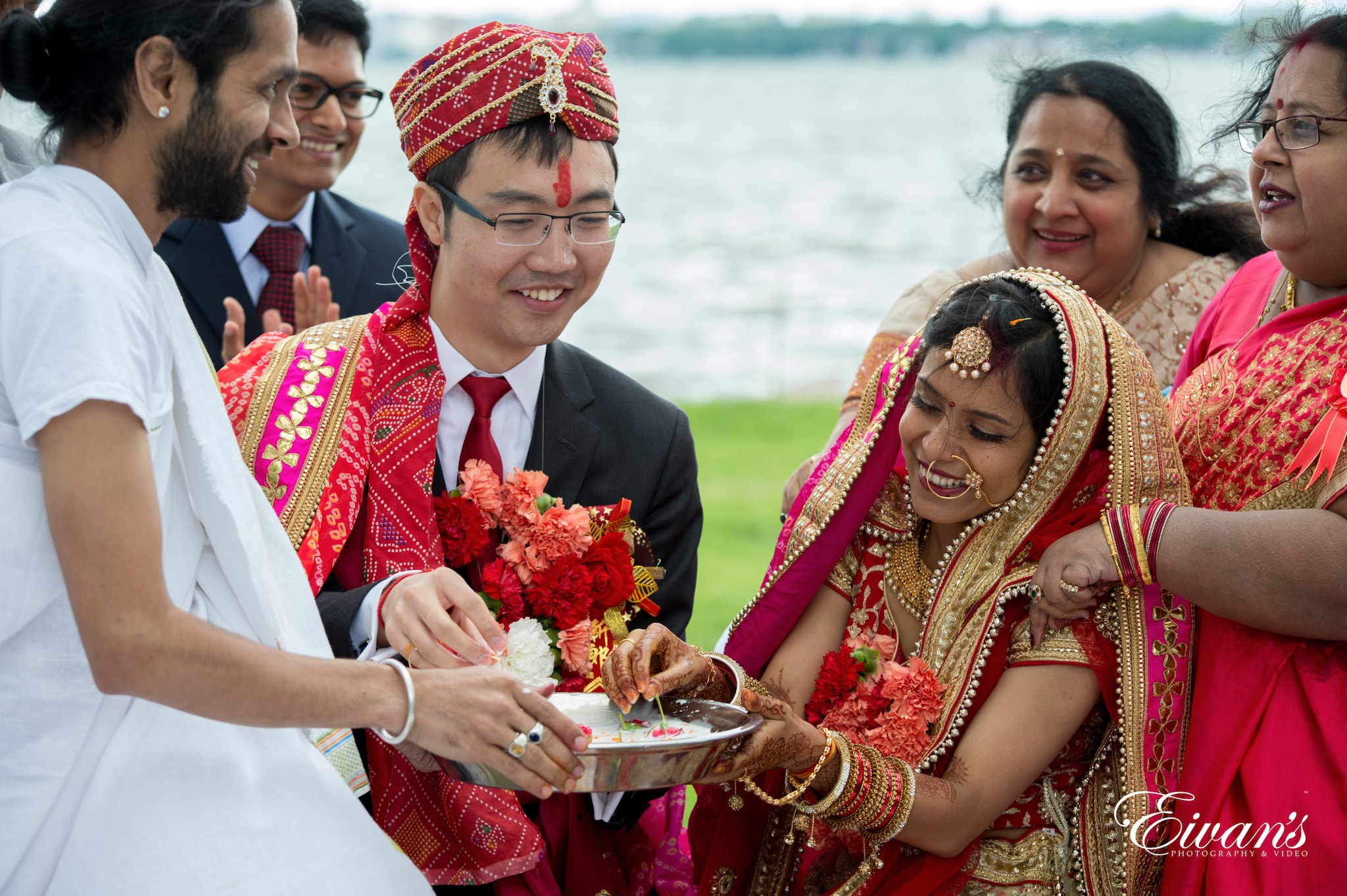
The wedding ceremony under the Mandap
Hindu weddings wedding venue is under a canopy known as Mandap. It is either placed indoors or outdoors. The Mandap features themed decor of colorful flowers, fabric and curtains. Each of the four pillars represents one of the four parents. The maternal uncle walks the bride down the aisle as the father of the bride waits at the altar. The bride’s brother places rice in the hands of the bride and groom that they throw into the ceremonial fire pit. Under the Mandap, a small sacred fire is lit and confined to a dish for safety. The god of fire, ‘Agni’ is believed to sustain life and give life to the new marriage.
The wedding ceremony begins with the bride’s parents giving away the bride. This ritual is the Kanya Daan. The bride and groom join hands and circle around the sacred fire in a ritual fire called Mangalphera.
Wedding dressing
Hindu weddings use bright, vibrant colors accessorized with gold jewelry. White color is for mourning according to their culture. The bride’s forehead and neck are also adorned with lots of jewelry. The bride has three or four dresses for different rituals. These dresses known as Lehenga are long skirts with a matching tops and scarves.
On the wedding day, the Indian bride wears a red or pink sari which represents happiness and good luck. The Sari is 6 foot fabric adorned with crystals and real 24 karat gold thread. The groom wears a long shirt extended to the knees, a Kafni with Pijamo leggings and a turban which is optional. A traditional indian wedding did not have any bridal party. Groomsmen and bridesmaids are optional in today’s weddings.
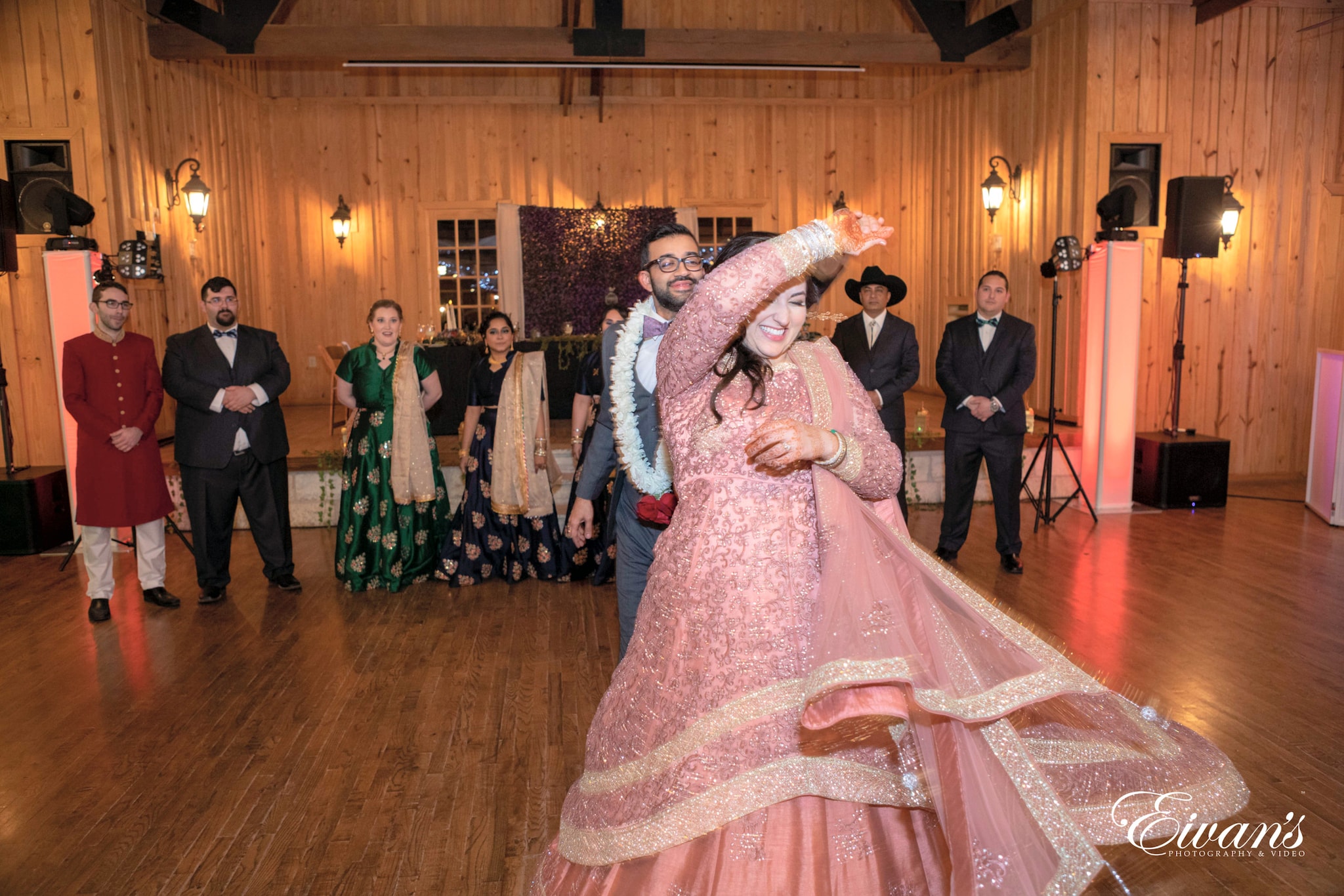
The wedding reception
Indian wedding ceremonies are full of food and fun. An Indian wedding menu has a wide variety of Indian foods served in buffet style.
The menu features
- up to ten appetizers
- five main entrees
- plus rice, salad, yogurt and naan bread
The food never runs out in an Indian wedding. It is replenished all night with songs and dance accompanying the food. The wedding photoshoot continues through the event capturing all the detailed rituals.
The following day after the wedding, the Bou Bhat ritual takes place. The groom’s family and the close bride’s family come for lunch at the couple’s home. During this event, the bride is formally welcomed into the family. The groom takes a pledge to provide for her food and clothing. To fulfill the pledge, he serves her food and gives her a new sari. Sari is a treasured fabric among the Hindu.
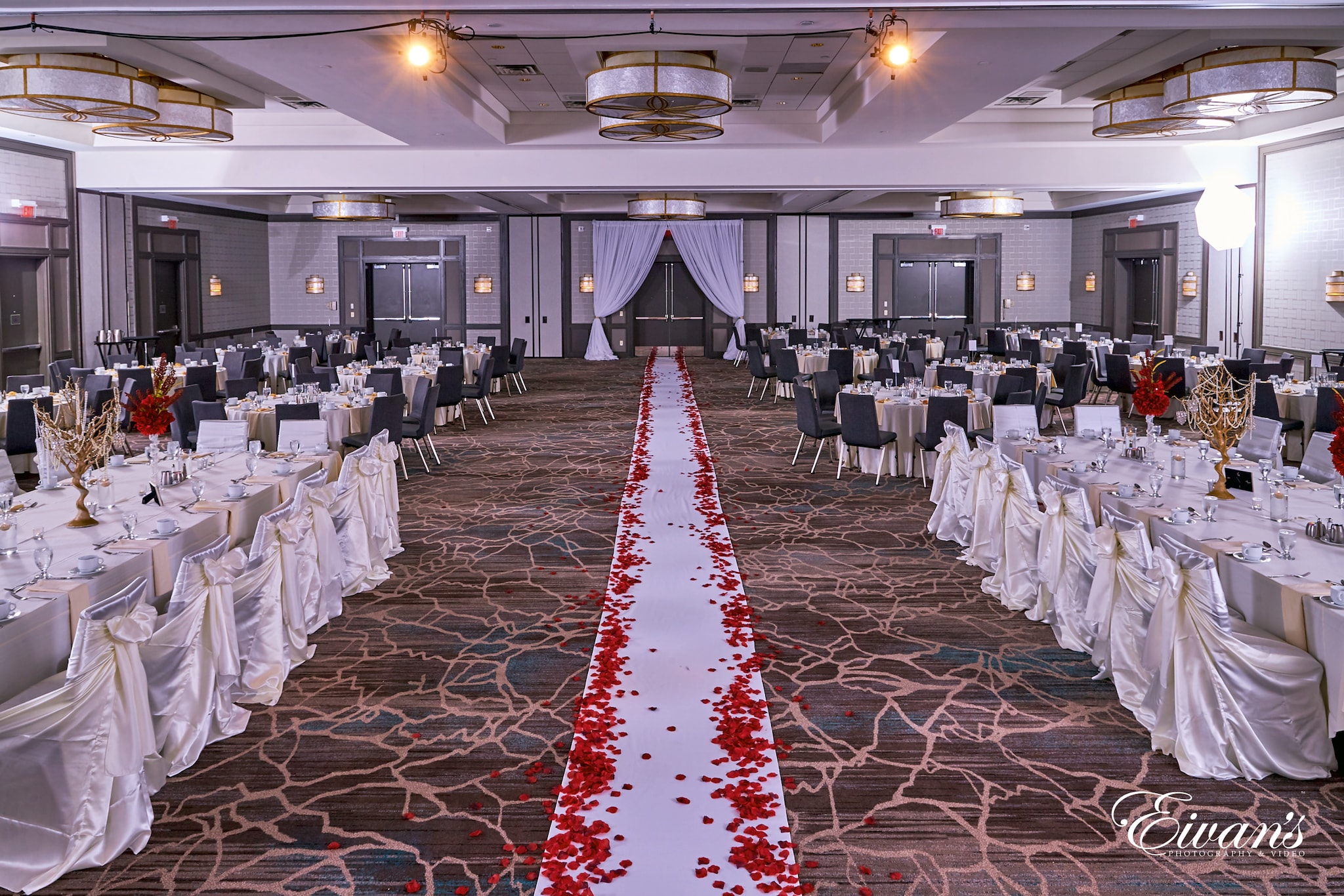
The married life blessings
Sometime after the wedding, the Aashirwad ceremony takes place. In this ceremony, the groom’s family, the bride’s family plus their close relatives visit the couple. Parents, aunts and uncles from both sides offer their blessings to the couple.
The bride receives gifts of gold or diamonds by the groom’s parents. This ritual is the culmination of a marriage in an Indian culture. They always start with blessings and end with them. What a beautiful way to marry!
